Day 1 :
Keynote Forum
Christopher Snyder
Rainbow Babies and Children’s Hospital, USA
Keynote: Effects of anesthesia on inducibility during pediatric electrophysiology studies
Time : 09:35-10:10
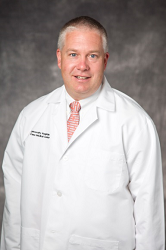
Biography:
Christopher Snyder is the Director of Pediatric Cardiology at Rainbow Babies and Children’s Hospital, Case Western Reserve University School of Medicine. His interests include general pediatric cardiology and Adult with Congenital Heart disease as well as a sub-specialty in pediatric and adult congenital electrophysiology on an inpatient and outpatient basis
Abstract:
The purpose of this talk is to define pediatric palpitations and discuss their evaluation and treatment ranging from the simple ECG to the implantable defibrillator. Palpitations are defined as a rapid pulsation or throbbing of the heart resulting in irregular, fast or abnormal heart beats. Palpitations are common in pediatrics and generally benign in nature. The evaluation of the pediatric patients with palpitations is guided by the history, physical examination and events that surround the episodes. Often times, the etiology of the palpitation can be discerned through a complete history of the events and little more is required such is the case in patients with anxiety, syncope and fever. Occasionally, the findings on the history or physical examination dictates the need for simple cardiac testing such as an ECG, Holter, tilt table or event monitor, often used to evaluate for syncope or dysarrhythmia. The primary worry clinician faces when presented with a patient with palpitations is their risk of sudden death. If the patients’ history, family history or physical examination deviates from acceptable, this triggers a more through evaluation to discern the cause of the palpitation. This work up often includes an ECGs and Holter monitor, an exercise stress test, an echocardiograms or cardiac MRI and often leads to further invasive testing either in the catheterization or electrophysiology laboratory. These more invasive tests are often required to rule out causes of sudden cardiac death that present with palpitations such as hypertrophic cardiomyopathy, prolonged QT syndrome and arrhythmogenic right ventricular dysplasia.
Keynote Forum
Bryan Cannon
Mayo Clinic Rochester, USA
Keynote: New innovations in electrophysiology and their application to the pediatric population
Time : 10:10-10:45

Biography:
Bryan Cannon is a Pediatric Cardiologist in Rochester, Minnesota and is affiliated with multiple hospitals in the area, including Mayo Clinic and Mayo Clinic - Saint Marys Hospital. He received his medical degree from University of Texas Southwestern Medical School and has been in practice for 19 years. He is one of the 13 doctors at Mayo Clinic and one of the 8 at Mayo Clinic - Saint Marys Hospital who specialized in Pediatric Cardiology.
Abstract:
Medical technology is advancing at a very rapid rate. There have been several new innovations that will potentially change the scope of practice in pediatric electrophysiology in the very near future. These innovations include subcutaneous ICDs, lead-less pacemakers, and performance of ablation procedures with no radiation exposure. Most of these new technologies are developed for adults, but pediatric electro physiologists will need to determine ways to adapt these new technologies to the pediatric population. Many of these new technologies present challenges purely due to their large size, but as technology progresses these devices will be smaller and the pediatric community should be prepared to implement them to maximize safety and efficacy in young patients. Some of the technologies such as ablation procedures with no radiation exposure are currently in practice, very effective, and consideration should be given to implementing their pediatric applications globally. This Keynote speech will discuss these new technologies, their current application to the pediatric population and limitations within this population, as well as future applications with changes in technology.
Keynote Forum
Sofia Grinenco
Hospital Italiano de Buenos Aires, Argentina
Keynote: Epidemiology of congenital heart defects
Time : 11:05-11:40

Biography:
Sofía Grinenco, Medicine Doctor (MD), is a Pediatric Cardiologist member of the Fetal Medicine Unit at Hospital Italiano Buenos Aires, Professor of Fetal Cardiology at Fundacion Hospitalaria, Council Member of the Cardiology Committee of the Argentine Society of Pediatrics (SAP), member of the Argentinian Society of Prenatal Diagnosis and Therapy (SADIPT), member of the Association for European Pediatric and Congenital Cardiology (AEPC), with several post-grade courses on Epidemiology and Statistics and on Clinical Bioethics. Currently her researches focus on optimizing prenatal diagnosis of congenital heart defects, and on these diseases physiopathology and intrauterine treatment.
Abstract:
Congenital heart defects (CHD) are the most common type of birth defect, affecting approximately 8 out of 1,000 newborns. Yet there is variability in the epidemiology of congenital heart defects throughout the world, and the reported incidence and prevalence have been changing in recent decades. The developments of prenatal diagnosis; fetal therapy and termination of pregnancy and maybe changes in environmental factors too; have modified the natural history of congenital heart defects. The improvements in cardiovascular surgery and treatment techniques by catheterization have improved survival and also the quality of life of adolescents and adults with congenital heart defects. Real incidence and prevalence are, in fact, unknown in many parts of the world. There has been identification of genes in high-risk families and experimental models. Environmental risk factors and protective factors still need to be identified; in order to ultimately achieve effective primary prevention. A review on reported data is presented focusing on crucial epidemiological questions, regarding outcomes, causation and risk assessment.
- Pediatric Cardiac Diseases
Pediatric Cardiovascular Diseases
Inflammatory Heart Diseases

Chair
Jie Tian
Children’s Hospital of Chongqing Medical University, China

Co-Chair
Flavia Ventriglia
University of Rome, Italy
Session Introduction
Michael Jenkins
Case Western Reserve University, USA
Title: Congenital Heart Diseases
Time : 11:40-12:05

Biography:
Michael Jenkins is an assistant professor at Case Western Reserve University with a primary appointment pediatrics and a secondary appointment in biomedical engineering. His research interest includes the development of optical pacing and optical imaging technologies for investigating cardiac development and diseases.
Abstract:
Previous studies suggest that altered hemodynamics early in development can lead to congenital heart defects. Unfortunately, due to a lack of technology to measure and perturb hemodynamic parameters during cardiac looping in a live preparation, many questions remain unanswered. We have utilized optical coherence tomography (OCT) to measure and optical pacing (OP) to perturb hemodynamics during cardiac looping in a live quail preparation. OP employs infrared pulsed light to noninvasively capture the heart rate to the pulse frequency of the laser without the use of exogenous agents. We hypothesize that altering regurgitant flow early in development leads to congenital heart defects. We increased regurgitant flow with OP in the heart of the embryonic quail at day 2 of development just prior to the formation of cardiac cushions (valve precursors). OCT measured pulsed Doppler traces at the inflow tract of the looping heart and gave a quantitative measurement of regurgitation.
Embryos were kept alive until day 3 (mid looping) or day 8 (4 chamber heart) after pacing to look at resultant morphologic changes to the Atrioventricular cushions and valves with OCT. Paced embryos had smaller cushions and endothelial mesenchymal transition at day three and defective valves at day eight. The cushion volume decreases scaled with the degree of induced regurgitant flow. These results suggest that abnormal regurgitant flow at the atrioventricular cushions can lead to congenital defects. Understanding the role of hemodynamics in development is an important step towards determining the mechanisms of CHDs and ultimately developing earlier treatment strategies.
Mauricio Laerte Silva
Hospital Infantil Joana de Gusmão-Florianópois, Brazil
Title: Assessment of subclinical cardiovascular risk factors in children and adolescents with celiac disease under treatment
Time : 12:05-12:30

Biography:
Dr Silva has a Master Degree and a Doctorate Degree in Medical Sciences at the Federal University of Santa Catarina, and a Master Degree in Epidemiology at Federal University of Rio Grande do Sul. He also attended a Post-Doctoral Fellowship in Perinatal Research in the Wayne State University,in Michigan, USA, and in the Georgetown University,in Washington DC,USA, where his focus was the fetal cardiac function, related to infections. His research field is on cardiovascular risk factors in diseases like AIDS and others with systemic inflammatory compromise, analysing mainly the cardiac and endothelium functions by means of ultrasonography.
Abstract:
Celiac disease (CD) is a chronic condition, which lasts for life and involves a broad spectrum of symptoms and constant dietary treatment. The impact of a gluten-free diet on nutritional and other biochemical and subclinical parameters have been systematically investigated, but further studies are still needed. We conducted an observational, cross-sectional, prospective study,with availability and not probabilistic samples, matched for sex, age and nutritional status, compounded of 30 participants with CD and 30 normal subjects. The study met all ethical principles. Total cholesterol and the LDL-C were higher in the CD group (p=0.0268 and 0.0253 respectively); the HDL-C was low in both groups; the increased intima-media thickness of the right carotid was more frequent in participants with CD (p=0.0049); and indicators of ventricular functions did not show specific changes. Therefore, patients with CD, under a gluten-free diet for at least one year, have dyslipidemia, a cardiovascular risk factor, and increased c-IMT, indicative of subclinical atherosclerosis.
Daniela Poli
Centro Cardiologico Pediatrico del Mediterraneo, Italy
Title: Hypoplastic Left Heart Repair
Time : 12:30-12:55

Biography:
Daniela Poli is working as Senior doctor at Centro Cardiologico Pediatrico del Mediterraneo, Ospedale Bambino Gesù - Taormina, Italy
Abstract:
Purpose. The hybrid approach for the treatment of patients with hypoplastic left heart syndrome most commonly includes double approach for transcatheter placement of a stent in the arterial duct via femoral groin and surgical placement of bands on the branch pulmonary arteries via median sternotomy. We present our results of an early single stage procedure for newborns affected by hypoplastic left heart syndrome.
Methods. From October 2011 to September 2014 at Centro Cardiologico Pediatrico del Mediterraneo-OPBG-Taormina, 41 consecutive patients underwent an early single stage hybrid approach procedure for diagnosis of HLHS(23 HLHS, 12 HLHS like, 6 HLHS complex). In 31 cases prenatale diagnosis was available and delivery was attempted in our hospital with ICU back up. All of them received continuous prostaglandins infusion, 17 of them required intubation or inotropic support before procedure. All patients were transferred to Hybrid Cat Lab, monitored by radial artery, central vein catheter, right hand and right foot pulse oxymetry and NIRS. After median sternotomy, the left and right pulmonary were banded by goretex 3 or 3.5 (according to the weight of the patients and size of the pulmonary branches) and then the stent was delivered in the arterial duct via a 7 French catheter positioned in the main pulmonary artery.
Results. All of them were treated during the first 24 hours after birth, median weight was 3.07 Kg (range 1.5 kg to 4.5 Kg). For stenting arterial ductus we used pre-mounted stents in diameter from 7 to 10 and lenght from 12 to 19 mm Genesis (Cordis, USA); in 5 cases pulmonary arteries banding was performed by 3 mm custom goretex tube (W.L. Gore & Associates, Inc USA), while 3 patients 3.5 mm was used. All patients survived to the procedure. Mean hospital stay lenght was 19 days (range from 6 to 70 days), mean ICU stay was 11 days (range from 2 to 70 days). Procedural complications occurred in four patients and in one patient was deffered sternal closure. At the median follow up of 90 days, all patients are still alive on medical therapy. Interstage period was characterized by surgical atrial septal defect enlargement in four cases and atrial septal stent was positioned in seven cases and balloon dilatation was performed in three casas. Ductal stenting was not performed in two cases due to excessive diameter of the ductus. In eight cases was pwrformed balloon dilatation of ductal stent and in three cases restenting. Fourteen patients underwent successfull comprehensive stage 2 procedure and eleven patients underwent biventricular repair.
Conclusion. In our early experience, single stage hybrid approach for various types of HLHS, demonstrated to be safety and efficacy, with very low morbility rate. Patients with HLHS are at risk for interstage morbidity and mortality, especially between the first and second stages after the hybrid procedure. A rigorous interstage follow up is mandatory in order to detect potential important anatomical issues regarding dimensions of atrial septal defect, rightr ventricular systolic function, tricuspid regurgitation, obstruction in the proximal or distal arterial duct, acquired or native retrograde obstruction of the aortic arch. Procedures should be performed in a dedicate cath lab by an experienced team according to an institutional program.
Edmo Atique Gabriel
UNILAGO, Brazil
Title: Challenges in pediatric and congenital cardiac disease
Time : 13:45-14:10

Biography:
Edmo Atique Gabriel has completed his medical school from Catholic University of Campinas and Postdoctoral studies from Federal University of Sao Paulo. He is clinical professor of medicine at Unilago School of Medicine and cardiovascular research expert. He has published papers in reputed journals and has edited two pioneering cardiovascular books by Springer.
Abstract:
Many challenges must be overcome to maintain a medical and surgical planning and management of congenital and pediatric heart disease. There is a paucity of clinical trials and established goals that take to a most precise therapeutic approach. Databases in pediatric and congenital cardiac disease need to be improved aiming to spreading worldwide different therapeutic methodologies in terms of particular operation, new devices or special medications. In addition to databases, pediatric and congenital cardiac disease require lifelong surveillance, follow-up imaging, consistent infrastructure and trained multidisciplinary team. Currently, medical treatment for pediatric and congenital pulmonary arterial hypertension, particularly regarding potential toxicities and optimal dosing, as well as surgical features in the setting of Ebstein's malformation, Fontan circulation and valve dysfunction warrant meticulous attention and additional investigations.
Flavia Ventriglia
University of Rome, Italy
Title: Early Fetal Echocardiography: Early Congenital Heart Diseases Detection in an Experienced Fetal Cardiology Project.
Time : 14:10-14:35

Biography:
Flavia Ventriglia, graduated and specialized in Pediatrics and Cardiology at the “Sapienza” University of Rome. PhD in Congenital Heart Disease at the University of Padua. Researcher Aggregate Professor of Pediatric Cardiology at the “Sapienza” University of Rome, first level manager at the UOC of Pediatric Cardiology at the Policlinico Umberto I in Rome, responsible for the ECHOLAb of Fetal Echocardiography. She has published numerous scientific paper in the field of pediatric cardiology and fetal cardiology
Abstract:
Background Early fetal echocardiography (EFE) is a diagnostic test of tertiary level, performed at 12-16 weeks gestational age (GA). EFE is usually carried out to diagnose earlier severe congenital heart diseases (CHD). However EFE showed some significant limitations: Crown-Rump Length value <50mm; increased maternal Body Mass Index; unfavourable fetal position; likelihood progression of the detected CHD. Material And Methods A multidisciplinary research protocol, approved by the ethics committee, is conducted in our universitary hospital to diagnose fetal CHDs as early as possible, alone or associated with extracardiac malformations or genetic abnormalities. From January 2014, 75 pregnant from 12th to 16th weeks of gestation came to our Fetal Echocardiography Service and underwent the scan according to the international cardiac protocol, using a 3D Convex trans abdominal volumetric probe, frequency range of 4-8 mHz.
Results: Pregnant women were divided into 6 groups: 1): 16 pregnants came in for screening (21%) 2): 10 pregnants affected by disease (14%). 3): 6 pregnants with a family history of genetic/chromosomal disorders (8%). 4): 15 pregnants with a family history of CHD (20%). 5): 24 pregnants with obstetric screening abnormalities (increased Nuchal translucency (11); cystic hygroma (9); malformations (3); tricuspid regurgitation (1) (32%). 6): 4 pregnants with suspected fetal CHD at obstetric screening (5%) Discussion And Conclusions From the clinical study, it emerges how the cardiac protocol enables a significantly more accurate early diagnosis of CHD, particularly if compared to gynecologic and obstetric protocols. To date, population screening does not appear to be necessary. In fact, EFE allows detecting CHD in high-risk groups (5-6) and it plays an important role from the psychological point of view in excluding a CHD in a second pregnancy, after a first pathological one (group 4). It’s possible confirm that the cardiologic transabdominal approach to EFE is usefull for early diagnosis of CHDs and for the study of their progression during gestational period, allowing a multidisciplinary support for a subsequent better management of pregnancies.
Krzysztof Piotrowski
Pomeranian Medical University, Poland
Title: The genetic aspect of human Heart Development in aspect of Prenatal Diagnosis
Time : 14:35-15:00

Biography:
Krzysztof Piotrowski, a specialist in Obstetrics, Gynecology and Clinical Genetics, completed his PhD with a dissertation on Fetal Echocardiography. Putting his knowledge into practice, he performed about 3,000 USG investigations of gravidas annually for prenatal diagnosis. He has published many scientific papers and chapters covering prenatal diagnosis. Having introduced the BACs-on-BEADs TM technology to Polish diagnostics, at present he is focused on applying molecular genetics prenatally. He has been designated as the Manager of Cytogenetic Unit for Pomeranian Medical University, Szczecin, Poland. Lately, he has founded a new independent genetic center, DIAGEN – PREDIAG
Abstract:
Congenital Heart Diseases (CHD) are the most common malformations both as an isolated form and a part of genetic syndromes. Extraordinarily fast development of molecular genetics confirms that almost all CHD are genetically dependent in terms of micro-aberrations in different regions of a chromosome or single gene mutations. On the other hand, CHD are an important component of diverse genetic diseases, including monogenic, metabolic and mitochondrial disorders, most often as secondary cardiomyopathies. The genes participating there-in are located nearly on each chromosome, mainly on pathways, along with ligand genes and co-factors, transcription factors or individually. Many mechanisms on heart development are based on the balance between apoptosis, proliferation and migration. Crucial genes controlling fetal development, including the creation of heart tube and the forming of left and right ventricular outflow are primary ‘homeobox’ genes grouped in 4 clusters HOX1-4. Other genes condition the forming of different structures. Moreover, in numerous functional disorders, for example the arrhythmia or block, the reason is also genetic, namely the mutation of ion- channel gene placed in 6 chromosomes. Many genes of cardio-genesis were identified, for example PTPN11 gene in Noonan syndrome. The gene is also responsible for the development of pulmonary valves or TBX5 gene in Holt-Oram Syndrome. Heart development is also affected by the imprinting (about 30 genes) and the inactivation of the X chromosome in day 21 stage of embryo. We propose, e.g. a practical classification could refer to specific CHD characteristic of particular disorders, which might prove helpful in daily practice because in prenatal diagnosis CHD is often the sole syndrome confirmed by USG scan, which may depend on truly isolated nature or non-specific mild ultrasound co-markers.
Ingrid Schusterova
P.J. Safarik University, Slovakia
Title: Epicardial adipose tissue in children is associated with an unfavorable cardiometabolic risk profile, but is not a stronger indicator than BMI
Time : 15:00-15:25

Biography:
She is currently the head of the Department of pediatric and adolescent´s medicine, Medical Faculty, P.J. Safarik University and Children Faculty Hospital at Slovakia, Central Europe. Her research interests focus on preventive cardiology, obesity, and disorders of lipid metabolism, atherosclerosis and their prevention in the pediatric age group.
Abstract:
Epicardial adipose tissue (EAT) is the visceral fat deposit around the heart and is commonly increased in obese subjects. EAT is related to cardio metabolic risk factors and non-alcoholic fatty liver disease (NAFLD) in adults, but this relationship is not well known in children. Objectives: The aim of our study was to assess by echocardiography the EAT in overweight and obese children and its relationship to cardio metabolic risk factors, insulin resistance, NAFLD markers and hyperuricemia.
Study group and methods: In 25 (mean age 13.0 ± 2.3) overweight and obese subjects and 24 lean controls, blood pressure (BP), WC, fasting plasma glucose and insulin, lipids, uric acid and hepatic enzymes were established and EAT thickness measured by transthoracic echocardiography.
Results: In overweight and obese subjects, EAT was significantly higher compared to normal weight children. Overweight and obese children had significantly higher body mass index (BMI), WC, BP, triglycerides (TAG), low-density lipoprotein and total cholesterol, hepatic enzymes alanine aminotransferase (ALT) and g-glutamyl transferase, and lower high-density lipoprotein cholesterol (HDL-C). EAT correlated significantly with BP, TAG, uric acid, HDL-C, Apo protein B and ALT. Correlation coefficients were similar or better than for WC, but similar or lower than for BMI. In conclusion EAT thickness in children is associated with an unfavorable cardio metabolic risk profile including biochemical signs of NAFLD and hyperuricaemia, but is not a stronger indicator than BMI.
Hanaa Ibrahim Rady
Cairo University
Egypt
Title: Prevalence of myocarditis in pediatric intensive care unit cases presenting with other system involvement
Time : 15:45-16:10

Biography:
Hanaa Ibrahim Rady is the Director and Medical Supervisor of Pediatric Intensive Care Unit since June, 2013. Dr Rady worked with students teaching programs for 4 years and with residents training programs for 4 years. She was part of the creator team of our Skill lab program. She attended more than one workshop in direction and management of complications as a part of the program of Cairo University.
Abstract:
Myocarditis is a challenging diagnosis to make. It is the most common cause of heart failure in otherwise healthy children. We aimed to determine children with myocarditis, the frequency of various presenting symptoms and the accuracy of different investigations in the diagnosis. We performed an observational study of 63 patients admitted to PICU with non-cardiac diagnosis. Cardiac enzymes, chest-X ray, echo and ECG were performed to diagnose myocarditis among those patients.
RESULTS: There were 16 cases of definite myocarditis. The age distribution was non-normal, with median 5.5 mo (3.25-21). Of the 16 patients who were diagnosed with myocarditis, 62.5% were originally diagnosed as having respiratory problems and females were more than males.
Among our cases, the accuracy of cardiac enzymes (cTn and CKMB) in the diagnosis of myocarditis was only 63.5%, while the accuracy of low FS and of CXR cardiomegaly was 85.7% and 80.9%; respectively. Cardiac Troponin folds 2.02 had predictive value of positive = 100%, predictive value of negative = 88.7%, specificity = 100%, sensitivity = 62.5% and accuracy =90.5%. Children with myocarditis present with symptoms that can be mistaken for other types of illnesses. When clinical suspicion of myocarditis exists, CXR and echocardiography are sufficient screening test. Cardiac Troponins confirm the diagnosis in screened cases, with specificity 100%.
Andreas C Petropoulos
Azerbaijan State Medical University
Azerbaijan
Title: Options in managing Heart Failure in Pediatrics. What is new in the 2014 ISHLT guidelines
Time : 16:10-16:35

Biography:
Dr. Andreas Petropoulos graduated from Aristotle University’s Medical School, Greece in 1989. Followed 30 year career as a medical officer, senior Flight Surgeon in the Hellenic Air-Force. Specialized in Aviation, Hyperbaric Medicine, Pediatrics, Fetal, Pediatrics and Congenital Cardiology in USA and Europe. Holds M.Sc in Preventive Cardiology. AEPC Prevention Working Group member. Worked and lectured in Athens and Brussels universities. Currently consults in Fetal, Pediatrics, Congenital Cardiology in Merkezi Klinika and is Associate Professor at the State University and Post Graduate and CME Center in Azerbaijan. His research focuses on prevention, CVD imaging techniques, fetal cardiology, heart failure.
Abstract:
Heart failure (HF) is childhood is a clinical and pathophysiological syndrome resulting from: 1. Ventricular inotropic dysfunction, 2. Volume and/or Pressure overload, 3. Irregular heart rhythm 4. Long standing Hyper dynamic Circulations. It presents as failure to thrive, respiratory distress, exercise intolerance and associated with circulatory, neurohormonal, molecular abnormalities. HF has numerous etiologies. It is a common clinical presentation as a consequence of cardiac or non-cardiac disorders, congenital or acquired. Worldwide prevalence is 322cases/million /children. From these 43% are under the age of 1 year old. In the CHD population 24% will present with HF and 70% will suffer from it in the 1st year following the diagnosis of CHD. At diagnosis 71% of DCM ‘s and 13% HOCM’s will present with HF. The aim of this paper is to present the current advances on evaluation and management of HF in childhood. It will focus on the 2014 International Society of Heart and Lung Transplantation (ISHLT), guidelines. These improve the previous 2004 ISHLT guidelines and amalgamate scientific data from the 2013 ACCF/AHA for management of HF in adults. We will focus on the areas of diagnosis and variety in treatment strategies.
Soha Emam
Cairo University, Egypt
Title: Incidence: CHD among patients referred to echocardiography unit at Cairo University Children Hospital, concluding referral criteria
Time : 16:35-17:00

Biography:
Soha Emam is a Professor of Pediatrics & Pediatric Cardiology at Kasr-Alaini School of Medicine, Cairo University, Egypt. She has completed her MD at Cairo University School of Medicine and has been specialized in Pediatric Cardiology. She completed her Post-doctoral training in Pediatric Cardiology at Italy. She is the Medical Coordinator of the Pediatric Cardiology Department, Cairo University and is the Head of Scientific & Conferences activity committee and a Coordinator of Research Activities of the Department. She has many publications in pediatric cardiology field and is an editor in reputed journals and serving as reviewer for many others. Her field of interest is fetal echocardiography and new echo modalities.
Abstract:
Cairo University Children Hospital (CUCH) is a tertiary care center and the central referral children hospital in Egypt. It is a very high flow hospital; consist of over than 2000 patients attending our general and special clinics per day. In this observational study, all patients were included which attended the echocardiography unit at CUCH over a period from January till December 2013. Around 6184 children were analyzed and found the incidence of CHD as well as prevalence of different types of CHD. It was noticeable that 34% of newly referred patients had normal echocardiography, comparable to 42% diagnosed with CHD. This reflected the need for establishing referral criteria to avoid improper and over utilization of the services.
Yang Lei
Nanjing Medical University, China
Title: The succinate receptor GPR91 is involved in pressure overload-induced right ventricular hypertrophy.
Time : 17:00-17:25

Biography:
Yang Lei. Male, born in 1980, lecturer, attending doctor, graduated in 2014 of the doctor degree of Pediatrics from Nanjing Medical University and directed by the famous pediatric cardiothoracic surgery professor: Mo Xuming, who is Chinese society of Pediatric Surgeons Committee and leader of children Cardiothoracic surgery group in china. After graduation, I am engaged in clinical and research work of congenital heart disease in Nanjing Children's Hospital affiliated to Nanjing Medical University, and always concerned about the research progress of congenital heart disease at home and abroad, and actively carry out the related basic research.
Abstract:
Background- Pulmonary arterial hypertension is characterized by increased pressure overload leading to right ventricular hypertrophy (RVH). GPR91 is an orphan G-protein-coupled receptor (GPCR) that has been characterized as a receptor for succinate; however, its role in RVH remains unknown.
Methods and Results- We investigated the role of succinate-GPR91 signaling in a pulmonary arterial banding (PAB) model of RVH in SD rats due to pressure overload. We found that GPR91 was located in cardiomyocytes. In both sham and PAB rats, treatment with succinate further aggravated RVH, up-regulated RVH genes and increased the p-Akt/t-Akt level in vivo. In vitro, succinate up-regulated the level of the hypertrophic gene marker anp and p-Akt/t-Akt levels in cardiomyocytes. All these effects were inhibited by an antagonist of PI3K, wortmannin, both in vivo and in vitro. Finally, we noted that the GPR91-PI3K/Akt axis was also up-regulated compared with that in human RVH. Conclusions- Our findings indicate that succinate-GPR91 may be involved in RVH via PI3K/Akt signaling in vivo and in vitro. GPR91 may be a novel therapeutic target for pressure overload-induced RVH.
Clariss Lovelle A. Blanco
St. Luke’s Medical Center, Philippines
Title: A Review of Acute Cardiac Abnormalities in Children With Kawasaki Disease In A Tertiary Hospital
Time : 17:25-17:50

Biography:
Dr. Clariss Lovelle A. Blanco is a young pediatrician from Cebu City, Philippines. She earned her medical degree from the Cebu Institute of Medicine, where she is now a part-time assistant professor. She completed her residency training at St. Luke’s Medical Center, Quezon City, Philippines in July last year. She plans to pursue a fellowship in either Pediatric Cardiology or Intensive Care soon.
Abstract:
This retrospective cross-sectional study aimed to describe the acute cardiac abnormalities in children with Kawasaki disease (KD) in a private tertiary hospital, and identify a correlation of clinical and laboratory findings with these acute cardiac abnormalities. A 10-year (2004-2013) chart review of KD cases describing the demographic, clinical and laboratory data was performed. Those cases with and without acute cardiac involvement were identified, then compared according to these clinical and laboratory parameters: age, sex, presence of each of the principal clinical manifestations, incomplete presentation, hematocrit, white blood cell count, platelet count, C-reactive protein, and erythrocyte sedimentation rate. Descriptive statistics were used, including measures of central tendency and dispersion. Ratio and proportion were calculated for the frequency distribution of each variable. Prevalence of those patients with and without acute cardiac abnormalities was obtained.
Acute cardiac abnormalities were seen in 59 of 67 (88.1%) KD patients. These included significant cardiac exam findings (50.7%), echocardiogram findings (77.6%), and electrocardiogram (ECG) findings (53.8% of 13 ECG’s). Pericardial effusion (59.7%) was the most common echocardiogram finding, followed by coronary artery lesions (40.4%). Statistical analysis showed no significant difference in the clinical and laboratory parameters between KD patients with acute cardiac abnormalities and those without. In conclusion, various, nonspecific cardiac abnormalities are demonstrated in the acute phase of Kawasaki disease. The most significant of these are coronary artery lesions. There was no significant difference in the clinical and laboratory findings between KD patients with acute cardiac abnormalities and those without.
Emile A. Bacha
Columbia University Medical Center, USA
Title: Individualized approach in the management of patients with hypoplastic left heart syndrome (HLHS)
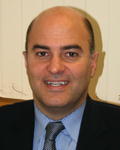
Biography:
Emile Bacha is a board-certified cardiothoracic surgeon with a subspecialization in pediatric cardiac surgery. From 2000–2004, he was the Surgical Director of the Congenital Heart Center at the University of Chicago. From 2004–2009, he was Senior Associate in Cardiac Surgery at the Children’s Hospital Boston and Associate Professor of Surgery at Harvard Medical School, as well as Cardiac Surgery Fellowship Program Director, and Director of the Pediatric Heart Valve Center. Since January 2010, Dr. Bacha has been Director of the Congenital and Pediatric Cardiac Surgery program at Morgan Stanley Children’s Hospital of NewYork-Presbyterian Hospital, Columbia University’s College of Physicians & Surgeons, and Weill-Cornell Medical School. In July 2011, he was appointed Chief of the Division of Cardiothoracic and Vascular Surgery at Columbia University Medical Center/NewYork Presbyterian.
Abstract:
Over the past decade, new variations on the "classic" first stage palliation (the Norwood/BT shunt) for patients with Hypoplastic Left Heart Syndrome have emerged and been vetted by the medical community. A "one size fits all" approach may not be adequate anymore. In this review, the optimal indications for the various palliative options (Norwood/BT shunt, Norwood/RV-PA conduit, Hybrid Stage I with or without ductal stenting, heart transplantation) are reviewed from a standpoint of the initial anatomy and physiology of the patient, letting it guide clinical management. Current knowledge useful for decision-making is also reviewed as objectively as possible.
Hypoplastic left heart syndrome (HLHS) remains one of the most common and lethal congenital heart anomalies, as reflected by the dismal 65% 5-year survival rate seen in the only prospective randomized study ever done in this field, the Single Ventricle Reconstruction (SVR) trial. In addition, the last 10 years have seen the emergence of alternative therapies for neonates afflicted with HLHS. The choice used to be palliative care vs Norwood Stage I with a modified Blalock-Taussig shunt (MBTS) vs heart transplantation. Today, the palliative care option has receded, but not disappeared, from the menu. Heart transplantation has become a rare back-up option for “failed†Norwoods or Fontans.
Reconstructive options include the Norwood/BTS, Norwood with a Right Ventricle to Pulmonary Artery shunt (RVPAS), and the so-called hybrid approaches Fifteen years ago, the vast majority of Norwoods were done at 18C under deep hypothermic circulatory arrest . A myriad of different circulatory support approaches at various temperatures have been described since, including the now popular selective cerebral perfusion through a shunt sutured to the innominate artery, though no agreement exists with regards to flow, temperature or impact on the central nervous system With respect to factors impacting outcomes, much more knowledge has been accumulated. We now know that neurodevelopmental problems are likely to be integral to children with HLHS and not necessarily (though can be) a consequence of surgical trauma.
Therese M Giglia
University of Pennsylvania, USA
Title: Thrombosis in Pediatric and Congenital Heart Disease

Biography:
Therese M. Giglia, MD is an Attending Cardiologist as well as Associate Professor of Clinical Pediatrics, Perelman School of Medicine at the Univ of Pennsylvania She is also the Director, Cardiac Anti coagulation and Thrombosis Program Medical Director, Infant Single Ventricle Monitoring Program
Abstract:
Thrombosis has long been recognized as a clinical problem to those caring for patients with pediatric and congenital heart disease. Much work has focused on the diagnosis, treatment, and prevention of thrombosis in Kawasaki Disease and to a lesser extent on the thrombotic complications associated with cardiac catheterization and cardiomyopathies. The prevention and management of thrombosis related to prosthetic valves, arrhythmias and pulmonary hypertension in children has largely been extrapolated from the adult literature. For the past decade, the single ventricle population has been identified as a particularly high-risk population for thrombosis and their potentially devastating sequelae. Two recent endeavors have highlighted the paucity of data and the need for much work in the areas of diagnosis, and treatment and most importantly in further defining risk factors so that these potentially life-threatening thrombotic complications can be prevented.
The American Heart Association commissioned a writing group of which I was the chairperson to critically review and summarize the available data on thrombosis in this patient population, and to make recommendations when appropriate. This work, published in 2013 is the first scientific statement to focus solely on the heterogeneous problem of thrombosis in pediatric and congenital heart disease and is intended to function not only as a resource for the clinician, but also as a springboard for much needed research. In 2012 the National Heart Lung and Blood Institute convened a Working Group of which I am a member to explore issues relevant to thrombosis in children with heart disease. A summary of the Group’s discussion on evidence gaps, challenges for this population and recommendations for strategic research was published in 2014. My talk will summarize for the clinician what is known in this area and highlight important factors deemed essential for much needed research.
Daniel Cortez
Children’s Hospital Colorado, USA
Title: Quantitative repolarization differences predict Kawasaki disease while atrio-ventricular depolarization differences predict coronary artery anomalies
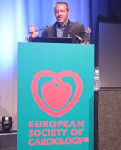
Biography:
Daniel Cortez Specializes in Pediatrics at Children’s Hospital Colorado, Aurora, CO, USA. Other Specialties are Anatomic & Clinical Pathology
Abstract:
Introduction: Kawasaki disease (KD) is the leading cause of acquired heart disease in children. 12-lead electrocardiogram (ECG) changes in patients during the acute phase of KD include flattened T-waves and prolonged corrected QT-intervals (QTc). We set out to determine the most accurate 12-lead ECG and VCG predictors for identification of patients with KD and which of these predictors would be clinically useful for early identification of those with coronary artery anomalies (CAA).
Methods: A blinded, retrospective case control study of patients with KD and age-/gender-matched controls was performed. Deep Qwaves, corrected QT-intervals (QTc), spatial QRS-T angles, principle T-wave component vector (RMS-T) and spatial P-R angles (SPR angles) were assessed. Student t-tests, Chi square, and Analysis of Variance were used to identify significant differences between groups.
Results: Fifty patients with KD (mean age 3.1 ± 3.1 years, 26% female) were compared to fifty control patients (mean age 3.8 ± 2.9 years, 44% female). Of the KD patients, 32 (64%) were diagnosed as atypical KD and 28 (56%) of them had CAA. KD patients were significantly differentiated from control patients by deep Qwaves (72% versus 44% p= 0.005), QTc values (395.1 ± 24.7 ms versus 410.4 ± 34.7ms, p= 0.013), and the RMS-T (4.2 ± 0.2dmV versus 6.3 ± 0.3dmV p= <0.001), respectively. Atypical KD was also discriminated from controls with an odds ratio or 22.3. The spatial P-R angle significantly discriminated CAA from those without.
Conclusion: The RMS-T differentiates KD, typical or atypical from controls. Kawasaki patients with coronary artery anomalies were differentiated from those without coronary changes by the SPR angle.
David Coman
The Royal Children’s Hospital, Australia
Title: The cardiac manifestations of the inborn errors of metabolism

Biography:
David Coman MBBS MPhil FRACP is a Paediatrician, Metabolic Physician and a Clinical Geneticist working in clinical practise in Brisbane Australia. He has a public appointment at the Royal Children’s Hospital in Brisbane, and is the Medical Director of Paediatrics at the Wesley Private Hospital in Brisbane. David has an active interest in teaching and is the Academic lead for Paediatrics in the UnitingCare Clinical School, Brisbane. He has a particular research interest in disorders associated with aberrant post-translational modification, epigenetics modification of single gene disorders, and novel disease discovery. David has active interests in Rare Disease Advocacy, and runs philanthropic General Paediatric Clinics to the Western provinces of the Solomon Islands.
Abstract:
The inborn errors of metabolism (IEM) exhibit protean clinical manifestations. Cardiac disease either in isolation or as part of a wider multisystem disease process, are frequently observed in the IEM. Cardiac presentations associated with the IEM include, arrhythmias, dilated cardiomyopathy, hypertrophic cardiomyopathy, non-compaction, Valvular disease, endocardial fibroelastosis, and aortic root pathology. IEM groups commonly associated with cardiac disease include the mitochondrial respiratory chain defects, fatty acid oxidation defects, glycogen storage diseases, lysosomal storage diseases, defects of organic acid and amino acid metabolism, and defects of post-translational modification.
This presentation will provide an update of the IEM disease process associated with cardiac disease, outlining a simple clinical approach to delineating an overarching diagnosis; especially in disease processes where a rapid diagnosis is essential, e.g., Pompe Disease.

Biography:
Dr. Vladimiro L. Vida is currently working in the Pediatric and Congenital Cardiac Surgery Unit at the University of Padua, Padua, Italy
Abstract:
Background: to evaluate the preoperative coagulation pattern and the postoperative blood product requirement (PBPR) in children with congenital heart disease (CHD), focusing on cyanotic patients (oxygen saturation, SATO<85%).
Methods: From January to August 2014 standard coagulation tests and ROTEM® assays were performed on paediatric patients (16 years) who underwent surgery for CHD.
Results: Eighty-one consecutive patients were included; 21 (26%) patients were cyanotic and 60 (74%) non-cyanotic. Mean age at surgery was 7.9 months (range 1 day-16 years). Cyanotic patients had a significantly higher haematocrit (p<0.001), a reduced prothrombin activity (PT %, p=0.01) level and lower platelets count (p=0.02) than non cyanotic patients. An inverse linear association was found between Clot Formation Time (CFT) and SATO2 (INTEM, p=0.001 and EXTEM, p<0.0001), and also between CFT and preoperative platelets count (INTEM, p=0.0005 and EXTEM, p=0.0003). A direct linear association was found between Maximum Clot Firmness (MCF) and patients’ SATO2 (INTEM, p=0.04 and EXTEM, p=0.05). Preoperative cyanosis was also associated to a lower median MCF in FIBTEM (p=0.02).
Cyanotic patients required more frequently postoperative transfusions of fresh frozen plasma (FFP, p=0.01) and fibrinogen (p=0.0001). Pre-operative lower PT and platelets count were associated to an increased post-operative fibrinogen administration p=0.02 and p=0.0001, respectively), as well as a longer CFT (INTEM, p=0.03 and EXTEM, p=0.007), and a reduced MCF (EXTEM, p=0.01 and FIBTEM, p=0.002).
Conclusions: ROTEM® parameters add important specific preoperative information to classic coagulation parameters in patients with CHD. Cyanotic patients presented with preoperative coagulation anomalies significantly requiring higher postoperative blood product supplementation.
L. Ben Mime
Deutsches Herzzentrum Berlin, Germany
Title: Evolution in congenital heart defects surgery since Gibbon first closed an ASD using cardiopulmonary bypass:

Biography:
L. Ben Mime is working at the Clinic of Pediatric Heart Surgery and Congenital Heart Defects HDZ-NRW, BO 32545, Germany.
Abstract:
Paradigm shift to a "Personalized Repair" of congenital heart defects and its challenges.
The four eras of cardiac surgery since Gibbon first closed an ASD using cardiopulmonary bypass:
1. Anatomical era: recognizable patterns of normal and pathological anatomy; restoration of functional anatomy. ASD, VSD closures; Total abnormal venous drainage; valve repair; Dacron conduits.
2. Pathophysiologic Era: increased understanding of cardiac physiology; emphasis on physiologic goals, staged procedures, Fontan principle. Valve prosthetic replacements; Shunts for cyanotic lesions; Bypass grafts, conduits, Homografts.
3. Biochemical and technological era: increased understanding and incorporation into surgical tactics of the biochemistry of myocardial metabolism, ventricular biomechanics, and applied technologies, e.g. improved CPB circuitry; material development and improved prosthetic heart valves based on engineering design principles; improved imaging, single stage neonatal/infant repairs, minimizing staging and palliation. 3rd generation valve replacement; aortic root replacements; 80% cardiac repairs < 12 months of age; hypoplastic left heart staged repairs.
4. "Regenerative surgery" era: viable replacement constructs molecular and genetic therapies incorporated into surgical repairs: bioengineering, tissue engineering, cell and gene therapies, regenerative medicine, molecular therapies, "Personalized" repairs, e.g. Tetralogy of Fallot reconstruction with growth capable RVOT and pulmonary artery viable tissue conduits.
This revolution will require a combination of expertise including cell and molecular biology, tissue engineering, surgery, tissue mechanics, cell signaling, chronic animal modeling.
N Vikramaditya Yadav
Klinikum Nürnberg Hospital, Germany
Title: Prevalence of Congenital Heart Disease in Iraq

Biography:
Narendra Vikramaditya Yadav completed his MRCP (Member,Royal College of Physicians)from prestigious St.Georges Hospital London(UK)in year 2001.He received extensive training in Interventional Cardiology under Dr.A John Camm.He was awarded membership by prestigious British Cardiac Society.He joined St.Georges Hospital,London As Interventional Cardiologist in2002. He was awarded International Associateship from American College of Cardiology in August 2003.Subsequently,he was offered Fellowship Program in Complex Angioplastys from RFUMS,North Chicago,IL.USA in 2004 under Dr..Jeffrey B. lakier.During this tenure he got training from Dr.Marie Claude Maurice on Bifurcation .Later on, he joined Dr.J Richard Spears, in year 2005, for Laser Angioplasty and Rotacs Procedure. He came to India in Jan,2006 and joined Wockhardt Heart Centre, Hyderabad,and performed few outstanding cases which were published in couple of National dailys.He was appointed “review author†of International Journal of Cardiolog
Abstract:
This research was performed to study the prevalence of Congenital Heart Diseases (CHDs) in Iraqi population. Data on the prevalence of CHDs were collected and analyzed from the major hospital of Amarah Province, Iraq from the year 2009 to 2014. The present investigation revealed a mean prevalence of 12.30 per 1000 live births of the total 5864 inpatients and live births with a yearly prevalence varying from 10.17 to 15.92 per 1000 live births.
The most frequent type of CHD was found to be Atrial Septal Defect (ASD) (21.16%) followed by Tetralogy of Fallot (TOF) (17.11%), Patent Ductus Arteriosus (PDA) (14.33%), Shunt (9.67%) and Ventricular Septal Defect (VSD) (12.87%). The prevalence of CHDs in Amarah is on the rise from 2009 to 2014 which might be due to the better access to healthcare facility, better medical skills leading to improvement of diagnosis, attention or awareness among the medical authorities on the disease. The prevalence of CHDs in Ahwaz is quite significant and it needs immediate medical attention.

Biography:
Mona Youssef MD is currently working in National Heart Institute, Cairo, Egypt. Previously I was working in governmental hospitals, Abbaseya, at Egypt. I am the Managing Editor at Combat Mi-CardiologyLinks (National Heart Association) from last 5 years.
Abstract:
Hypertension in the young population is underestimated and undertreated; not because of negligence, but rather due to the difficulty in its diagnosis and follow-up.
Each child has a blood pressure of his own in accordance to his age, sex, height, weight and his ethnicity and genetics. Many pediatricians do not profile the parent’s health condition.
The proper way for blood pressure measurements is also not stressed upon in exams and most do not look for it unless they spot a culprit. Primary hypertension is as real for children as it is for adults to the point of the need for publication of guidelines especially for the younger age groups.
Modern day life style along with obesity and its growing prevalence is becoming problematic. "White coat" hypertension is also shared by the young population and has led to the adoption of 24 hour ambulatory blood pressure measurement techniques that may be cumbersome and annoying for the active and relentless child.
Not every medication prescribed for an adult can be prescribed for a child. And on top of all of that, most people seek their pediatrician only in time of "known†sickness eliminating the advantage of follow-up on any new developments; and when informed of their child's condition, they take it lightly because "kids just don't have primary hypertension" unaware of the implications later in life, raising the problem of compliance.
General awareness is not only necessary for the general population as a whole, but also for their healthcare provider.
- Neoplastic Disorder of Pediatric Heart
Medical Management of Pediatric Heart Disorder
Cardiovascular Development or Cardiac Surgery

Chair
Christopher Snyder
Rainbow Babies and Children’s Hospital, USA

Co-Chair
Brojendra Agarwala
University of Chicago, Comer Children’s Hospital, USA
Session Introduction
Omer Faruk Dogan
Numune Education and Training Center, Turkey
Title: The management of post-surgery pediatric heart failure: Current and future developments
Biography:
Abstract:
Jorge A. Coss-Bu
Texas Children’s Hospital USA
Title: Nutrition Support Guidelines in the Cardiac Intensive Care Unit: Evidence or Expert Consensus based practice?
Time : 10:10-10:35

Biography:
Dr. Jorge A. Coss-Bu completed Pediatric residency and fellowship in Pediatric Critical Care Medicine at Baylor College of Medicine and Texas Children’s Hospital, Houston TX, USA; and appointed Associate Professor at the same institutions. He is board certified in Pediatrics and Pediatric Critical Care Medicine by the American Board of Pediatrics. He has over 100 scientific publications including manuscripts, abstracts and book chapters in the area of nutrition and metabolism of the critically ill child and his research work has been presented in 75 scientific events and invited to speak in more than 140 lectures in the US and worldwide.
Abstract:
The profound metabolic response of the patient admitted to the cardiovascular intensive care unit (CVICU) with a critical illness, including injury, surgical stress, or inflammation is not always predictable and varies in intensity and duration between individuals. The energy cost imposed by this metabolic response may be proportional to the severity and duration of the stress but cannot always be accurately estimated. Failure to recognize existing nutritional deficiencies and provide adequate nutrition support during the acute phase of the illness may exacerbate pre-existing malnutrition or result in new nutritional deficiencies. Both overfeeding and underfeeding should be avoided in order to decrease metabolic imbalances and development of malnutrition in critically ill patients. The nutritional plan should be individualized and customized to each patient during their CVICU admission. The impact of early enteral nutrition and optimal energy balance might be most relevant in patients with preexisting malnutrition, who cannot afford added nutritional worsening during the course of the acute illness. Enteral nutrition is preferred, but if enteral nutrition is not tolerated, parenteral nutrition should be started after patient condition has stabilized. A specialized nutrition support team in the CVICU and aggressive feeding protocols may enhance the overall delivery of nutrition, with shorter time to goal nutrition, increased delivery of enteral nutrition, and decreased use of parenteral nutrition. More research is needed in order to develop nutrition support guidelines for critically ill children admitted to the CVICU, in the mean time expert consensus recommendations should guide the care provided to these children.
Aris Lacis
University Children Hospital, Latvia
Title: Bone marrow derived progenitor stem cell transplantation as a temporary measure before heart or lung transplantation in children
Time : 10:35-11:00

Biography:
Aris Lacis, Cardiac Surgeon, Professor, MD, PhD graduated Riga Medical Institute in 1961. General and thoracic surgeon in P. Stradina University Hospital in Riga (1964–1969). Thoracic and cardiac surgeon in the Latvian Centre for Cardiovascular Surgery (1969–1994). Since 1994 until 2012 – the head of Pediatric Cardiology and Cardiac Surgery Clinic in University Children’s Hospital, Riga; since 2012 – a consulting professor of this Clinic. Vice-president of Latvian Society for Cardiovascular Surgery. President of Latvian Association for Pediatric Cardiologists. Author of 395 scientific publications, 3 monographs and 13 patents.
Abstract:
Context: On a global level, stem cell research has been a major challenge during the last decade. There have been achieved positive results in experimental studies on animals and there have been identified several conditions in adult population where bone marrow derived progenitor stem cell transplantation (BMPSCT) may play a crucial role. Though, little is known about possible implementation of the BMPSCT in paediatrics, dilated cardiomyopathy and pulmonary arterial hypertension in particular.
Objective: To determine the role of BMPSCT in management of critically ill paediatric patients followed by assessment of safety and efficacy of the procedure.
Design, Settings, Participants: Two patients (9 and 15 years old) with trisomy 21 and severe pulmonary arterial hypertension due to uncorrected large ventricular septal defects were been admitted to our department to receive intrapulmonary BMPSCT procedure. Both patients underwent radionuclide scintigraphy before the procedure, followed by repeated scans 6, 12, 24 and 36 months after BMPSCT. Latest results show improvement of lungs vascularization. Seven patients (4 months – 17 years) with dilated idiopathic cardiomyopathy were admitted for intra- myocardial BMPSCT procedure. All seven patients underwent repeated clinical examination every two months, up to 4 years of age. We observed improvement of left ventricular ejection fraction, decrease of left ventricular end diastolic dimension by echocardiography and cardio-thoracic index at chest X-ray exams, reduction of serum brain natriuretic peptide serum levels and decrease of the stage of heart failure from stage IV to stage I, by NYHA classification. No per procedural harmful side effects were observed.
Conclusions: The results are promising and we suggest that BMPSCT might be used for the stabilization of the patient to get the time for further symptomatic treatment or serve as a bridge for heart or lung transplantation.
Maurice J. B. van den Hoff
Academic Medical Center, Meibergdreef, Netherlands
Title: Myocardium formation after the development of the linear heart tube
Time : 11:20-11:45

Biography:
Dr van den Hoff obtained his PhD in 1994 from the University of Amsterdam: “Isolation and characterization of the rat carbamoylphosphate synthetase I gene”. After moving to the field of heart development with Prof Moorman, he established his own group focusing on heart muscle cell formation and epicardial development after the formation of the linear heart tube. As a visiting scientist he has developed a tight collaboration with the Medical University of South Carolina in Charleston (US). Currently, he is vice-chair of the department of Anatomy, Embryology & Physiology and AMC Principle Investigator and has published in excess of 86 papers (H-index 29) in peer-reviewed journals.
Abstract:
Over the last decade knowledge on the formation of the heart has advanced substantially. It was long thought that within the linear heart tube, which is formed during the third week after fertilization in humans, all future adult cardiac compartments were already segmentally present. However, extensive molecular analyses in experimental animals have shown that the initially formed linear heart tube only comprises the left side of the interventricular septum and a small part of the left ventricular wall.
During subsequent development, the linear heart tube lengthens by the recruitment of mesodermal cells that differentiate into the myocardial lineage at both the arterial en venous poles. To discriminate the mesodermal cells that contribute to the forming heart at both distal borders of the heart tube, they are often dubbed the first and second heart fields. Within this lengthening heart tube the cardiac chambers are formed by local differentiation and proliferation. The latter concept is summarized in the ballooning model of heart development. In this presentation new insights in this field will be discussed.
Umesh Dyamenahalli
University of Chicago Medicine, USA
Title: Expansion of Medical Excellence Processes in Cardiac Intensive Care Unit: Routine bedside debriefing followed by Comprehensive Root Cause Analysis after CPR.
Time : 11:45-12:10
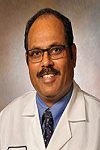
Biography:
Umesh Dyamenahalli is a pediatric Cardiologist and Intensivist; an Associate Professor, Director of Cardiac ICU and an Associate Chief Pediatric Cardiology at the University of Chicago. He has been the author for about 40 publications in reputable journals and few book chapters. He has been working in the field of quality enhancement; the new team initiatives are multidisciplinary and have changed practice and culture and enhanced patient, family and care providers’ satisfaction along with improved outcomes. As a recognized safety and quality expert, Umesh serves on the American College of Medical Quality Board.
Abstract:
Learning Objectives: Multidisciplinary post-CPR debriefing enhances problem understanding and team empowerment. A comprehensive Root-Cause-Analysis of CPR event enhances quality of care.
Introduction/Background: Advanced diagnostic and therapeutic modalities have improved survival and outcomes in cardiac ICU. In a complex medical environment, timely recognition and understanding pathogenesis of complications is paramount, which is achievable through debriefing and root-cause-analysis.
Initiative Description: Two initiatives are based on existing ideas and were integrated into routine practice to enhance the understanding of the problems using multidisciplinary approaches.
Innovation: Routine debriefing after CPR, in a complex ICU environment, have not been described. In-depth and routine, medical team initiated RCA after CPR has not been widely practiced and publicized.
Results/Outcomes: Since 2008, debriefings have been performed utilizing continuous PDSA cycles. This modified the management, resulted in comprehensive training initiatives, system improvement and creation of protocols. It impacted patient care and safety culture positively and empowers the staff. Since 2007 RCA after CPR events performed. In about 50% events, review suggested areas for improvement in management.
Lessons Learned: Clinical debriefing in CICUs is feasible, positively impacts quality of patient care, enhances safety culture, improves occurrence reporting and empowers staff. Routine Post-CPR, RCA is feasible in a busy CICU. In complex patients, these reviews serve as a model tool to enhance patient care, team education and avert some CPR event.
Omer Faruk Dogan
Numune Education and Training Center, Turkey
Title: The Management of Post-surgery Pediatric Heart Failure: Current and Future
Time : 12:10-12:35

Biography:
Dr. Dogan has completed his degrees in Hacettepe University Medical Faculty, Ankara, Turkey. He completed Pediatric Cardiovascular Surgery fellow-ship program in 2006 after adult cardiovascular surgery residency. His study is continued in Cardiovascular Surgery and Pediatric Cardiology Clinic in the same university. He is the director of Adult and Pediatric Cardiovascular Surgery. He is an Editor in Chief of Case Reports in Medicine. He also is member of Editorial Board in eight international scientific journals. He had more than 70 papers in reputed journals.
Abstract:
As we know that heart failure is a complex pathology that may be seen in children with congenital heart disease include development of cardiomyopathies due to myocarditis. In general, this severe clinical condition is associated with a high rate of morbidity and mortality and places a significant burden on families. Current medical and/or surgical treatment modalities are taken largely from the management of heart failure in adults, though clear survival benefit of these medications are lacking. There is no adequate published data on the overall prevalence or incidence of heart failure in children. However, the success of mechanical circulatory support in management of heart failure has raised the prospect of a previously unavailable treatment modality. Heart transplant remains the gold standard treatment, but the number of patients requiring this treatment far outweighs the donor availability.
It is therefore not surprising to see the popularity of various circulatory support modalities, with devices ranging from veno-arterial extra-corporeal membrane oxygenation (ECMO) to ventricular assist devices which have different properties such as pulsatile or continuous flow management. Indication, timing and the choice of the type of mechanical support are critical in order to avoid lethal complications. In many patients we can see that hemorrhage due to continuous anti coagulation requirement, thrombo-embolism and infections. In pediatric patients with heart failure, mechanical supporting system is used rarely for bridge to transplantation in many of centers. Active research is currently underway to develop newer and more durable devices that will assist the pediatric population across all age groups. The combined experience developed through the usage of different devices in pediatric and adult populations has led to the application of mechanical circulatory support in some subgroups of grown–up congenital heart diseases patients, particularly those with systemic right ventricular failure. Left and/or right ventricular assist programs and/or the use of Para corporeal supporting devices combined with indicators and VADs have taken an increasingly main role in the management of advanced heart failure in children. The predominant devices have been used for bridge to heart transplantation. Excellent results are currently achieved for most children who requiring surgery.
There is an ongoing investigation to improve outcomes in high-risk populations, such as small infants and those with complex congenital heart disease. Additionally, there is an active investigation and interest in expansion of VADs beyond the predominant utilization as a bridge to a heart transplant into ventricular recovery, device ex-plant without a heart transplantation (bridge to recovery), and placement of devices without the expectation of destination therapy. Survival four years after hospital admission has been reported as only 70%. In the United States, it is currently estimated that greater than five million adults have heart failure with projections reaching greater than eight million by 2030. The mortality at five-years after the diagnosis of heart failure remains at approximately 50%. The authors concluded that the costs of heart failure estimates in the United States will be $70 billion in the near future.
Andreas C Petropoulos
Azerbaijan State Medical University, Azerbaijan
Title: Strategies to prevent cardiac diseases in childhood
Time : 12:35-13:00

Biography:
Dr. Andreas Petropoulos graduated from Aristotle University’s Medical School, Greece in 1989. Followed 30 year career as a medical officer, senior Flight Surgeon in the Hellenic Air-Force. Specialized in Aviation, Hyperbaric Medicine, Pediatrics, Fetal, Pediatrics and Congenital Cardiology in USA and Europe. Holds M.Sc. in Preventive Cardiology. AEPC Prevention Working Group member. Worked and lectured in Athens and Brussels universities. Currently consults in Fetal, Pediatrics, Congenital Cardiology in Merkezi Klinika and is Associate Professor at the State University and Post Graduate and CME Center in Azerbaijan. His research focuses on prevention, CVD imaging techniques, fetal cardiology, heart failure.
Abstract:
The burden of cardiac disease is a sum of 1% of the general population suffering from Congenital Heart Disease (CHD) and an unknown high prevalence of acquired disease. Cardiomyopathies, arrhythmias - sudden cardiac death, rheumatic heart disease, hypertension and accelerating atherosclerosis are among the most frequent. Adding on, genetic syndromes including cardiac defects, endocarditis and myocarditis we can address a large pediatric population worldwide, suffering from heart disease. Diagnosis and treatment of these diseases are not afforded in many countries worldwide due to luck of human and material resources. The aim of this paper is to describe how some of the above mentioned can be either early detected or prevented. We focus on some forms of sever CHD, sudden cardiac death linked to sport activities and detecting- preventing CVD in the young. Measurements of pre and post ductal saturation of oxygen using pulse oximeteres, on the third day from birth, can early and cheap detect Ductal Arteriosus dependent pulmonary/ systemic and cyanotic CHD’s, saving lives. The use of a combination of detailed medical history, physical examination and 12 lead ECG, during a pre-participation in sport activities screening test can prevent sudden cardiac death. Screening and treating existent risk factors for CVD as well as preventing obesity and hypertension, contributes in the burden of CVD.
Christina Pagel
University College London, UK
Title: Monitoring mortality and morbidity after heart surgery in children: why, what and how?
Time : 14:20-14:45

Biography:
Christina Pagel is a researcher at Clinical Operational Research Unit, University College London, Gower Street, London, WC1E 6BT, UK
Abstract:
Routine monitoring of outcomes following surgery can drive service improvement and was pioneered in adult cardiac surgery. Since 2001, all cardiac procedures in children have been subject to mandatory reporting and publication in the UK. But in the rapidly developing and complex area of paediatric cardiac surgery, what are the most appropriate outcomes to measure and how should they be reported? Mortality has often been perceived as a straight forward measure of outcome and is often used to evaluate surgical performance. Currently in the UK, mortality within 30 days of heart surgery in children is monitored and published by the national audit body and each hospital’s mortality outcomes are benchmarked against recent national outcomes using the Prais risk model (1,2).
However, there are nonetheless some disadvantages to using mortality as an outcome measure (3,4). In the welcome context of falling mortality rates, morbidities following heart surgery in children are considered an ever more important outcome but they are potentially many, much more difficult to define, more difficult to measure routinely and we do not know which morbidities are the most important to track. In this talk, I will discuss the benefits and risks of monitoring mortality and an ongoing ambitious research project in the UK (5) to select, define and measure morbidities following heart surgery in children.
Natasa Chrysodonta
University of Bristol, UK
Title: A systematic review for the effectiveness of angiotensin receptor blockers vs beta-blockers in the management of aortic root dilation in Paediatric Marfan syndrome
Time : 14:45-15:10

Biography:
Natasa Chrysodonta has completed a medical degree in the University of Bristol, and a BSc in Medical Sciences and management in Imperial College London. Currently she is a foundation year 1 acute medicine doctor at Hinchingbrooke Hospital in Cambridgeshire.
Abstract:
Marfan syndrome is a rare inherited connective tissue autosomal dominant disease. The vast majority of the affected population will develop cardiovascular complications, with aortic-root dissection being the leading cause of the death in this cohort. It also leads to premature death, with 50% mortality in adulthood if left untreated. Currently, beta-blockers are the standard therapy used in the management of aortic root dilation in Marfa’s syndrome, as it has been shown to decrease the rate of the dilation. Within the last decade a number of studies have begun to assess the effectiveness of angiotensin – II receptor blockers (Arb) vs. beta-blockers in the management of aortic root dilation in Marfan syndrome.
The aim of this systematic review is to examine the use of Arb vs. Beta-blockers in the management of aortic root dilation in pediatric patients with Marfan syndrome. Four main databases were used for the article search – Cochrane, Medline, PubMed and EMBASE, using the following terms: “Aortic dilation”, or “aorticpathology”, or “aortic contract”, and “marfan”, or “Marfan syndrome”, and beta-blockers, or b-blockers, or adrenergic beta antagonist, and arb, or angiotensin receptor blocker, or angiotensin-II receptor blocker. The primary outcome was defined as the normalised rates of aortic dimensions before treatment initiation compared with follow-up measurements after treatment initiation (z-score). A total of 7 studies were identified, out of which only 3 have published results and were included in the review. Two of the studies which compared the combination of beta-blockers and Arbs vs. beta-blockers alone, showed inconsistent results. The 3rd study, which compared Arbs vs. beta-blockers alone, revealed that the prophylactic use of either medication had a similar effect in both groups. Currently the evidence suggests that Arb and beta-blockers slow down the progression of aortic root dilations. However, more randomised control trials are needed in order to draw clear conclusions on whether Arbs are more effective than beta-blockers in the management of aortic root dilation in Pediatric Marfan syndrome.
Munesh Tomer
Medanta- The Medicity, India
Title: Neonates and infants with critical cardiac lesions and preoperative clinically proven/culture positive sepsis: Is waiting or refusing surgery justified?
Time : 15:10-15:35

Biography:
Munesh Tomar is a well-known pediatrician in the country with about 10 to 15 years of work experience in the field of pediatric cardiology. Presently she is working as a Senior Consultant in the Department of Pediatric Cardiology and Congenital Heart Disease in Medanta, Gurgaon since March 2011. The major areas in which she is an expert includes- Echocardiography, transthoracic including 3D, trans esophageal Ech. fetal echocardiography, evaluation and management of arrhythmias, diagnostic cardiac catheterization etc.
Abstract:
Objective: Advances in cardiac surgery has led to strong emphasis on performing corrective surgery early in life for most congenital heart defects. In developing countries it is common to see babies with critical cardiac condition presenting late with secondary complications, the most common being infection. We present our experience on the outcome of these small infants when operated with on-going sepsis. Method: Hospital records of 194 consecutive neonates and small infants (age-birth to 6 months) who underwent surgical intervention between January 2012 and December 2014 were retrospectively reviewed. Group A includes patients presenting with sepsis in need of early surgery. Group B includes babies undergoing elective surgery. In group C we have included the patients with proven or probable sepsis needing early intervention but we waited for stabilization. Echocardiography diagnosis was comparable in all three groups. Main outcome measures were duration of ventilation, inotropic scores, oxygen dependency, total ICU stay and hospital stay, postoperative bloodstream infection and mortality. Conclusions: Preoperative infection contributes significantly to operative morbidity and mortality, but delay in intervention further compromises the outcome. The overall result of this study indicates that intervening early is cases requiring early/emergency surgery; even in the presence of sepsis is associated with reasonably good outcome vis-a-vis compare with cases in which surgery was delayed due to sepsis.
Hady Atef
Cairo University, Egypt
Title: Effect of Low Level Laser on Healing of Moderate Sized Induced Septal Defects on Rabbits
Time : 15:55-16:15

Biography:
Hady Atef is a teacher assistant at faculty of physical therapy, Cairo University, Egypt. He had his master degree from the same university; he is interested in researches about congenital heart disease. He is a former editor at many international journals. He is now completing his experimental work about laser applications in congenital heart defects.
Abstract:
Background and purpose: congenital ventricular septal defects are among the most frequently reported congenital heart defects. The aim of this study was to investigate the response of LASER irradiation on induced ventricular septal defects.
Subjects and Methodology: twenty male rabbits who underwent induction for ventricular septal defects by cardiac puncture technique with age ranged 6-10 months enrolled in that study for one and half months. They were assigned into two groups: Group (A): The experimental group consisted of 10 rabbits who received routine animal care associated with LASER irradiation.
Group (B): The control group consisted of 10 rabbits who received routine animal care alone. The program continued for one and half months. Sizes of the septal defects were measured for both groups at the beginning of the study and after the end of one and half months.
Results: There was significant decrease of size of the diameter of the induced ventricular septal defect with study group (percentage of improvement 22.17%) when compared with control group.
Conclusion: It was concluded that LASER therapy can be considered as a promising therapy for congenital heart defects in animals and to be examined on children after then.
Alzbeta Tohatyova
Pavol Jozef Safarik University, Slovakia
Title: Relationship between structural and functional changes of the left ventricular and uric acid and obesity in children and adolescent
Time : 16:15-16:35

Biography:
Alzbeta Tohatyova is currently a PhD student at Medical Faculty, P J Safarik University in Kosice, Slovakia, Central Europe. Her research interests focus on childhood obesity, structural and functional changes of the left ventricular in case of obesity in children.
Abstract:
Nowadays, hyperuricemia, as a cardiovascular risk factor, is considered one of the metabolic syndrome component, and it is closely correlated with obesity and the body fat accumulation level. No data have been published regarding the influence of the Uric Acid (UA) level on the structural and functional changes of the left ventricular in case of obesity in children, and thus the aim of our study was to assess the influence on UA in obese children. In 25 (age 13, 0±2, 3) overweight and obese subjects and 24 lean controls, blood pressure, WC, fasting plasma glucose and insulin, UA were measured. Left Ventricular (LV) and Left Atrium (LA) structural and functional parameters were measured by transthoracic echocardiography. In patients with obesity and overweight were significantly structural changes: Higher LV thickness, LV mass, LV size, as -well as functional changes: higher LV volume, LV stroke volume (LV SV) and impaired LV diastolic indexes. The UA values were higher in overweight and obese children, but this increase was not significant. Simple linear analysis showed a correlation of UA with LV thickness, relative wall thickness, LV size and area, LV volume diastole, LV SV and LV ejection fraction. In this study, we confirmed structural and functional changes of left heart in terms of LV volume overload in childhood obesity. This change seems to be influenced by UA, but the association between the signs of left volume overload and UA has not yet been clarified. This research would require other studies with a larger amount of patients.
Pan Bo
Children’s Hospital of Chongqing Medical University, China
Title: Alcohol exposure induced Histone3 Lysine9 hyperacetylation and over-expression of heart development-related genes both in vitro and in vivo
Time : 16:35-16:55

Biography:
He is a Doctoral candidate of Chongqing Medical University at China. He is working under the Supervisor of Professor Jie Tian.
Abstract:
Background: Alcohol abuse during gestation may cause congenital heart diseases (CHD). The underlying mechanisms of alcohol induced cardiac deformities are still not clear. Recent studies suggest that histone modification may play a crucial role in this pathological process. The aim of this study is to investigate the effect and the mechanisms of alcohol exposure on histone acetylation modification and the expression of heart development-related genes during heart development.
Material & Methods: Cardiac progenitor cells and KM mice were used in in vitro and in vivo studies respectively. Pregnant mice were gavaged with ethanol or saline every day in the morning from E7.5 to E15.5. Western blotting and real-time PCR were employed to determine H3AcK9 acetylation and gene expression. HATs and HDACs activities were detected by colorimetric assay and fluorometric assay. Chromatin immunoprecipation (ChIP) assay was used for the detection of H3AcK9 acetylation level in the promoter region of heart development-related transcription factors.
Results: Low level of ethanol or its metabolites had little effect on H3AcK9 acetylaiton or the expression of heart development-related genes. However, high doses of ethanol and acetate significantly increased H3AcK9 level and augmented the expression of GATA4 and Mef2c (p<0.05). In whole animal experiments, the level of H3AcK9 acetylation reached peak at E17.5 and decreased sharply to a low level at birth and maintained at low level afterward. Alcohol exposure increased H3AcK9 acetylation at E11.5, E14.5, E17.5 and E18.5 respectively (p<0.05), and enhanced the expression of Gata4 in the embryonic hearts at E14.5 and E17.5, Mef2c at E14.5 and Nkx2.5 at E14.5 and E17.5, (p<0.05) but not for Tbx5 (p>0.05). On embryonic day 17.5, HATs activities of embryonic hearts increased significantly, however alcohol exposure did not alter HDACs activities. H3AcK9 level in the promoter of Gata4 and Nkx2.5 were increased significantly (p<0.05).
Conclusion: Alcohol exposure both in vitro and in utero may induce an increase of HATs activities, which results in H3K9 hyperacetylation and an enhanced expression of heart development-related genes.
Rogelyn F Tapuro-Olais
Philippine Heart Center, Philippines
Title: Effects of early versus routine determination of prothrombin time and activated partial thromboplastin time in postoperative bleeding among pediatric patients undergoing cardiopulmonary bypass
Time : 16:55-17:15

Biography:
Dr. Rogelyn F. Tapuro-Olais has completed her medical degree at Saint Louis University and internship at Philippine General Hospital. She had her pediatric residency training at Saint Louis University Hospital where she won first place in the Annual Residents’ Research Contest in 2009. She completed her 3-year fellowship training in Pediatric Cardiology at the Philippine Heart Center. Presently, she is a clinical research fellow in echocardiography at the same institution.
Abstract:
Background: Excessive bleeding after cardiopulmonary bypass (CPB) continues to be an important cause of morbidity and mortality for both adult and pediatric population.
Objectives: 1) To determine the incidence of postoperative bleeding among children with cyanotic and acyanotic heart disease undergoing CPB with early and routine determination of PT and PTT; 2) To determine if there is significant difference in bleeding outcomes in early versus routine determination of PT and PTT levels among children with cyanotic and acyanotic heart disease undergoing CPB; 3) To determine if there is significant difference in the number of blood products transfused in early versus routine determination of PT and aPTT levels among children with cyanotic and acyanotic heart disease Methods: Double-blinded randomized controlled trial was done. One hundred twelve children who underwent open heart surgery from February 2012 to December 2012 at Philippine Heart Center were included. Fifty-six had cyanotic heart disease and 56 had acyanotic heart disease. Each group was subdivided into group A and group B. Group A had early determination of PT and aPTT (blood sample taken after CPB) while group B had routine determination of PT and aPTT (blood sample taken after surgery). Chest tube drainage was recorded for 24 hours and this was the measure for postoperative bleeding. Volume of blood products transfused was also recorded. Chi-square and T tests were used for statistical analysis. Results: The study showed 32.1% incidence of significant postoperative bleeding among patients with cyanotic CHD with group A while 39.3% with group B (p value=0.00). And the volume of PRBC transfused among the cyanotic subjects in group B is higher at 14.54 cc/kg compared to group A at 9.89 cc/kg (p value=0.05). While among the acyanotic patients, there was no significant difference in the incidence of significant postoperative bleeding and volume of transfused blood products.
Conclusion: There is higher incidence of significant postoperative bleeding in cyanotic patients, group B than group A. Also, the volume of PRBC transfused among cyanotic patients in group B is larger compared to group A. Whereas, among acyanotic patients, there is no significant difference in the incidence of significant postoperative bleeding and volume of transfused blood products between group A and B.
Tolga Kurt
Canakkale Onsekiz Mart University, Turkey
Title: Pediatric Extracorporeal Life Support Systems and Pediatric Cardiopulmonary Perfusion Systems: Now and Future
Time : 17:15-17:35

Biography:
Dr. Tolga KURT has completed his PhD at the age of 24 years from Pamukkale University School of Medicine and postdoctoral studies from Bulent Ecevit (Karaelmas) University School of Medicine. He became a cardiovascular surgeon at the age of 32 years. He and his colleagues open the first Cardiovascular Surgery Simulation Laboratory in 2013 (third in Europe) for the cardiac surgery operations and cardiac perfusion simulation. He gives lessons to the perfusionists to improve their use of pediatric extracorporeal life support and pediatric cardiopulmonary bypass systems. He has published more than 30 papers in reputed journals and has been serving as an editorial board member of repute. He also published a book about cardiopulmonary bypass perfusion.
Abstract:
Pediatric cardiac perfusion systems are still the most important systems for the success of the pediatric cardiac surgery. Pediatric extracorporeal life support (ECLS) is instituted for the management of life threatening pulmonary or cardiac failure. Although new tecnologies has developed, the pediatric cardiopulmonary circuit size shows so much diversity when compared with the adult perfusion systems. For example, the prime volume used in cardiac surgery for adults is about 25-33% of the total blood volume but the pediatric cardiac patients are 2-3 times more of the total blood volume, so we have to search for new technologies. There are different types of roller and centrifugal pumps used in pediatric cardiopulmonary perfusion systems like Medos Deltastream DP3, Levitronix CentriMag, Medtronic Affinity CP, Terumo CAPIOX SP, Medtronic BPâ€50 Bioâ€Pump etc. These pumps priming volume are different from each other so we have to use the best pump for our pediatric cardiac patients. There are also different types of oxygenators and arterial filters. The ultrafiltration perfusion systems can also be used for the increase of heamoglobine levels, for removing the inflammation mediators, citrate, lactate from the blood. (Medivator Hemocor HPH Jr, Terumo CAPIOX Hemoconcentrator, Medos Hemofilter Pro 60 etc). When pediatric cardiac patients need a myocardial or pulmonary support or is waiting for the operation time, we use pediatric extracorporeal life support systems: ECMO (Extra Corporeal Membrane Oxygenator), and ECCO2R (Extra Corporeal CO2 removal) are used less than 30 days and, VAD (Ventricular assist devices) are used more than 30 days for cardiac supports.

Biography:
Dr. Rogelyn F. Tapuro-Olais has completed her medical degree at Saint Louis University and internship at Philippine General Hospital. She had her pediatric residency training at Saint Louis University Hospital where she won first place in the Annual Residents’ Research Contest in 2009. She completed her 3-year fellowship training in Pediatric Cardiology at the Philippine Heart Center. Presently, she is a clinical research fellow in echocardiography at the same institution.
Abstract:
Background: Excessive bleeding after cardiopulmonary bypass (CPB) continues to be an important cause of morbidity and mortality for both adult and pediatric population. Objectives1) To determine the incidence of postoperative bleeding among children with cyanotic and acyanotic heart disease undergoing CPB with early and routine determination of PT and PTT; 2) To determine if there is significant difference in bleeding outcomes in early versus routine determination of PT and PTT levels among children with cyanotic and acyanotic heart disease undergoing CPB; 3) To determine if there is significant difference in the number of blood products transfused in early versus routine determination of PT and aPTT levels among children with cyanotic and acyanotic heart disease Methods: Double-blinded randomized controlled trial was done. One hundred twelve children who underwent open heart surgery from February 2012 to December 2012 at Philippine Heart Center were included. Fifty-six had cyanotic heart disease and 56 had acyanotic heart disease. Each group was subdivided into group A and group B. Group A had early determination of PT and aPTT (blood sample taken after CPB) while group B had routine determination of PT and aPTT (blood sample taken after surgery). Chest tube drainage was recorded for 24 hours and this was the measure for postoperative bleeding. Volume of blood products transfused was also recorded. Chi-square and T tests were used for statistical analysis. Results: The study showed 32.1% incidence of significant postoperative bleeding among patients with cyanotic CHD with group A while 39.3% with group B (p value=0.00). And the volume of PRBC transfused among the cyanotic subjects in group B is higher at 14.54 cc/kg compared to group A at 9.89 cc/kg (p value=0.05). While among the acyanotic patients, there was no significant difference in the incidence of significant postoperative bleeding and volume of transfused blood products. Conclusion: There is higher incidence of significant postoperative bleeding in cyanotic patients, group B than group A. Also, the volume of PRBC transfused among cyanotic patients in group B is larger compared to group A. Whereas, among acyanotic patients, there is no significant difference in the incidence of significant postoperative bleeding and volume of transfused blood products between group A and B.
Aarti C Bavare
Baylor College of Medicine, USA
Title: Rapid Response to critical deterioration of pediatric cardiac patients: characteristics and outcomes

Biography:
Dr Aarti Bavare has completed her Pediatric residency at the Children’s Hospital Boston and Boston University combined pediatric residency program. She has received fellowship training in pediatric critical care and pediatric cardiac critical care at Texas Children’s Hospital and Baylor College of Medicine. She is currently an Assistant Professor of Pediatrics at Baylor College of Medicine and is the Medical Director of the house-wide Pediatric Rapid Response System at Texas Children’s Hospital. Her research interests include critical communication, resource utilization to serve critical needs of children and simulation medicine.
Abstract:
The Rapid Response (RR) system is a multidisciplinary modality to detect, trigger and provide response to clinical decompensation of patients outside the Intensive Care Unit (ICU). There is growing evidence to support that early detection of physiologic deterioration and prompt response can decrease adverse outcomes i.e cardiopulmonary arrest or mortality.
Pediatric cardiac patients are highly vulnerable to decompensation needing emergent intervention and treatment. We sought to explore the frequency and pattern of utilization of RR by these patients and their outcomes.
We conducted a retrospective review study at a large tertiary care referral pediatric heart center. We reviewed 1906 RR events that occurred in our center over a period of three years. Out of these 152 occurred in cardiac patients. We reviewed the charts of the patients involved in these events with respect to the demographic characteristics, reason for RR event, interventions needed and outcomes thereafter.
The results provide useful insight into causes of acute clinical deterioration in pediatric cardiac patient population. The important observations made during this research will hopefully be a useful guide to direct initiatives to improve care and resource allocation to this high risk population.

Biography:
Dr. Siegel completed medical school at State University of New York, Downstate and radiology training at Mallinckrodt Institute of Radiology, Washington University School of Medicine (WUSM), St. Louis, Missouri. She is board certified in both Radiology and Pediatrics. She is currently professor of Radiology and Pediatrics at Washington University School of Medicine. She is the author of over 250 journal articles, 40 chapters, and 15 books, including a comprehensive textbook on pediatric body computed tomography and a textbook on adult congenital heart disease. She also has written several Magnetic Resonance Clinics of North America that were devoted to pediatric MRI.
Abstract:
Congenital vascular anomalies of the thorax represent an important group of entities that can occur either isolated or associated with different forms of congenital heart disease. From a clinical viewpoint, they can be totally silent, or because of associated cardiac anomalies or compression of the airway and esophagus result in cardiovascular, respiratory or feeding problems that result in morbidity and mortality. For patient management, it is extremely important that radiologists, surgeons and cardiologists have a clear understanding of these entities, their imaging characteristics and clinical relevance.
The imaging armamentarium available in the diagnosis of these diverse conditions is ample, and has evolved from such traditional methods as chest radiography and angiography to new modalities that include multidetector CT and magnetic resonance imaging (MRI). These imaging modalities have added safety, speed and superb resolution in diagnosis and in the case of CT provide additional information about the airway and lung parenchyma resulting in a more comprehensive examination with greater anatomic coverage. The purpose of this lecture is to review the most important congenital thoracic vascular anomalies, their clinical presentation and imaging characteristics with an emphasis on MDCT and MRI.
Serban Stoica
Children’s Hospital and the Heart Institute, UK
Title: Early reoperations in a 5-year national cohort of congenital heart disease patients

Biography:
Serban Stoica is working as Consultant Cardiac Surgeon at Children’s Hospital and the Heart Institute, Bristol. Previously he was working at King Fahd Armed Forces Hospital. He practice congenital heart surgery in all age groups and I also retain an active interest in all forms of surgery for adult acquired heart disease (coronary surgery, valve repairs, aortic surgery etc.). He is Educated from The University of Sheffield, UK.
Abstract:
OBJECTIVE: 1. To determine the quantitative burden of early congenital reoperations; 2. to evaluate if reoperation within the first 30 days is a suitable metric of quality of care.
METHODS: Anonymised data on early reoperations were extracted from the UK National Institute for Cardiovascular Outcomes Research (NICOR) for 2005-2010.
RESULTS: 19239 procedures were identified in 15552 patients. During data cleaning 723 reoperations were excluded (3.8%) and the remainder were adjudicated to predefined categories. 676 early reoperations (3.5%) were recorded in 593 patients, ranging from 1-7/patient (median 1/patient). Cases included/excluded and their prevalence are shown below (Table). The cases excluded a priori are likely under-represented as practices vary between centres (e.g. for reopening) and for submitting minor procedures data to NICOR. There are many complex scenarios where surgical teams choose operative adjustment (e. g. in palliative procedures) or planned/complex operative sequences to mitigate survival. For retained patients the median age and weight were 4.0 kg and 0.19 years and18.2% of them were readmitted for reoperation. Independent risk factors were sought by multivariate analysis. The most common reoperations were in patients palliated by shunting.
CONCLUSIONS: Reoperations within 30-days are infrequent. Those that can be accurately included in a retrospective analysis are no more prevalent than death (3.2%). ‘Unplanned’ reoperation is a misnomer as only a minority can be classified as such. Prospective studies are under way to establish the definitions and true prevalence of reoperations. Until these studies are completed, inclusion of unplanned surgery on quality of care dashboards is debatable.
Constance G. Weismann
Yale University School of Medicine, USA
Title: Right Ventricular and Pulmonary Valve Function Before and After Pulmonary Valve Replacements - Comparison of Transcatheter vs. Surgical Approach

Biography:
Dr. Weismann completed her medical training at Georg-August Universitaet Goettingen, Germany. Following a clinical year in the Pediatric Heart Center Giessen, she moved to New York where she completed pediatric residency and pediatric cardiology fellowship training in the accelerated research pathway. During that time she was awarded the Glorney-Raisbeck fellowship. Since 2010 Dr. Weismann has been Assistant Professor of Pediatrics in the Division of Pediatric Cardiology at Yale School of Medicine with a clinical focus on echocardiography. Her research interests focus on vascular-ventricular interaction, right ventricular function assessment by echocardiography, and pulmonary hypertension in infants with bronchopulmonary dysplasia.
Abstract:
Background: Trans-catheter (TC) pulmonary valve replacement (PVR) has become common practice for patients with right ventricular outflow tract obstruction (RVOTO) and/or pulmonic insufficiency (PI). The aim of this study was to compare patients who received trans-catheter Melody valves to those who underwent surgical PVR before, and a t two time points following PVR.
Methods: Retrospective review of echocardiograms obtained at three time points: last study before PVR, first study after PVR, most recent follow-up. We recorded patient characteristics and echocardiographic parameters of right ventricular (RV) and valve function. RVOTO was graded according to ASE guidelines for pulmonic stenosis (moderate: peak velocity 3-4m/s). Statistical methods included Chi-square, linear regression and mixed linear model to control for co-factors.
Results: We identified 76 patients who had undergone TC (N=42) or surgical (N=34) PVR between 2011 and 2014. Mean age was 21(±14) years. There was no difference between the groups in age or body surface area. At baseline, more patients in group TC had at least moderate RVOTO with or without PI (32/42 vs 3/34, p<0.001), and predominant PI was less common (10/42 vs. 29/34, p<0.001). At initial post-procedural echocardiogram there was no difference in valve function. 86% had at most mild RVOTO and 97% at most mild PI. At most recent follow-up, however, there was more valve dysfunction in the surgical group (moderate RVOTO 3/32 vs 10/26, p=0.03; mild or moderate PI: 0/32 vs 10/26, p=0.002). This remained significant after correcting for length of follow-up. 63 patients had quantitative assessment of RV function at a minimum of two time points. They were included in a mixed linear model that compared RV function between the groups, and controlled for predominance of RVOTO and/or PI prior to PVR. The TC group had an immediate increase in RV S’, but none of the other parameters changed significantly (table 1). Following surgical PVR there was an acute decrease of TAPSE, S’ and E’, that only partially recovered at follow-up.
Conclusion: Melody valve placement is associated with better pulmonary valve function in follow-up. Patients with surgical but not TC PVR had decreased RV function in follow-up, even when controlling for RVOTO and/or PI prior to PVR. Melody valve should therefore be the first choice for patients who are considered for PVR whenever possible.
Ali Dodge-Khatami
University of Mississippi, USA
Title: Alternative Strategies in Newborns and Infants with Major Comorbidities to Improve Congenital Heart Surgery Outcomes at an Emerging Program

Biography:
Prof. Ali Dodge-Khatami studied medicine in Geneva, Switzerland (1991), is board certified as a cardiovascular surgeon in Switzerland since 1998 (The Netherlands (2001, Germany 2008), and obtained his PhD from the University of Amsterdam, The Netherlands (2003). Since 2000, he is committed full-time to Congenital Heart Surgery, published 99 peer-reviewed articles, co-authored 9 book chapters, and continues with animal laboratory research along with student/resident teaching at academic facilities. He was head of the Congenital Heart Program in Hamburg, Germany (2008-12) and is Chief of Pediatric Cardiac Surgery at UMMC Jackson, Mississippi, USA since 2013. His interests include tennis, skiing, scuba diving, and teaching congenital heart surgery during humanitarian surgical missions in developing countries.
Abstract:
Introduction: Debilitating patient-related non-cardiac comorbidity cumulatively increases risk for congenital heart surgery. At our emerging program, flexible surgical strategies were employed in high-risk neonates and infants generally considered inoperable, in an attempt to make them surgical candidates and achieve excellent outcomes.
Materials & Methods: Between April 2010 and November 2013, all referred neonates (143) and infants (308) (average scores: RACHS 2.8 and STAT 3.0) underwent 451 primary cardiac operations: Biventricular lesions underwent standard (n=294) or alternative (n=19) repair/staging strategies (pulmonary artery banding(s), ductal stenting, right outflow patching). Uni-ventricular hearts followed standard (n=103) or alternative hybrid (n=35) staging. The impact of major pre-operative risk factors (37%), standard or alternative surgical strategy, prematurity (44%), gestational age, low birth weight, genetic syndromes (23%), and major non-cardiac comorbidity requiring same admission surgery (27%) was analyzed on need for extracorporeal membrane oxygenation (ECMO), mortality, length of intubation, intensive care unit (ICU) and hospital stays.
Results: ECMO need (8%) and hospital survival (94%) varied significantly between surgical strategy groups (p=0.01 and p=0.0384, respectively). In high-risk patients, alternative bi and uni-ventricular strategies minimized mortality, but were associated with prolonged intubation and ICU stay. Major pre-operative risk factors and lower weight at surgery significantly correlated with prolonged intubation, hospital length of stay and mortality.
Discussion: In our emerging program, flexible surgical strategies were offered to 54/451 high-risk neonates and infants with complex congenital heart defects and significant non-cardiac comorbidity, in order to buffer risk and achieve patient survival, albeit at the cost of increased resource utilization.
Daniel Cortez
Children’s Hospital Colorado, USA
Title: Non-invasive electrocardiographic predictors of ventricular arrhythmias in patients with Tetralogy of Fallot
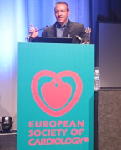
Biography:
Daniel Cortez Specializes in Pediatrics at Children’s Hospital Colorado, Aurora, CO, USA. Other Specialties are Anatomic & Clinical Pathology.
Abstract:
Introduction. Tetralogy of Fallot patients carry a significant ventricular arrhythmia risk burden. If the risk burden is known then at the time of pulmonary valve replacement cryoablation lines can be placed to help treat these arrhthyhmias. Vectorcardiographic (VCG) principles may provide additional clinical information to the 12-lead electrocardiogram (ECG). We hypothesize that not only the QRS duration, but other QRS-specific VCG parameters may have predictive value for determining ventricular arrhythmia (VA) risk in on Tetralogy of Fallot (TOF) patients undergoing pulmonary valve replacements (PVR’s).
Results. Of the 73 patients analyzed, 11(15%) had newly diagnosed ventricular tachycardia. The RMSQRS and the QRSd showed significant differences between those with and those without newly diagnosed VA. RMSQRS for those with and without VA were 12.3±5.2mV vs. 16.5±7.3mV respectively (p<0.033), A cut-off value of 11.2dmV gave sensitivity and specificity of 73% and 77% respectively. The QRSd significantly differentiated those with VA versus those without, with values of 141.0±36.3ms vs. 165.6±25.0ms, respectively. At a cut-off value of 152ms the sensitivity and specificity were 73% and 53% respectively. For either RMSQRS of <11.2dmV or QRSd of 162ms, the sensitivity and specificity for VA was 91% and 92%, respectively with a relative risk of 11.2. No significant differences were found for the other parameters tested between these two groups.
Conclusion. In this retrospective analysis of TOF patients undergoing PVR’s, VCG evidence of quantifiable lower QRS voltage combined with QRSd give non-invasive significant and clinically useful ventricular arrhythmia risk stratification, similar to that reported for more invasive procedures.
Paul Barach
University of Oslo, USA
Title: Assessing and improving teamwork in pediatric cardiac surgery care

Biography:
Paul Barach is a board-certified Anesthesiologist, with fellowship training in Cardiac Anesthesia, Critical Care medicine and human factors, at the Massachusetts General Hospital and Harvard Medical School where he trained and practiced. He set up the Centre for Safety at the University of Chicago, and founded the Centre for Patient Safety and Simulation at the University of Miami Jackson Memorial Hospital, where he was Associate Professor and Associate Dean for Patient Safety. He chaired the Jackson Memorial Hospital Patient Safety Committee and was the Medical Director for Quality for 3 years. He helped write the legislation and co-founded the Florida Patient Safety Corporation.
Abstract:
Background Cardiac surgery (PCS) has a low error tolerance, is dependent upon sophisticated organizational structures and demands high levels of cognitive and technical performance. The aim of the study was to assess the role of intraoperative non-routine events (NREs) and team performance on pediatric cardiac surgery outcomes. The current paper focuses on improving methods for studying teamwork; a companion paper will report on the empirical results.
Methods The authors trained human factors observers to observe and code the NRE’s and teamwork from time of arrival of the patient into the operating room (OR) to the patient handover in the intensive care unit. The observers underwent immersive training in which each observer attended 10 operations, learnt in detail about the technical procedures and clinical tasks and received practice in coding teamwork. Two observers were used interchangeably to observe OR teamwork. The authors instigated a rigorous training and assessment protocol, with independent assessment of their performance by both senior medical and human factors experts using video-based assessment. Real-time teamwork observations were supplemented with process mapping, questionnaires on safety culture, level of preparedness by the team, difficulty of the operation and outcome measures.
Results 19 PCS cases were observed. The observers observed a total of 255 hr of operations, including the first 10 training cases. We found that 68% of events were observed by one observer but only 32% of all events were observed by both observers. If an event was coded by both observers, 76% was coded in the same way, resulting in high levels of inter-rater agreement. The inter rater reliability of the four main teamwork categories was 91% with Cohen kappa of 0.77. Recommendations were developed for observing teamwork in the operating room, for instance ‘train observers on video recordings of real operations (not scripted performance), preferably of at least 1e2 h in duration’ and ‘Rate teamwork in real time and not afterwards.’
Conclusions PCS is an ideal model to explore team performance. A challenge for the future is to make observations of teamwork in healthcare settings more efficient and robust. Systematic and periodic assessment of observers is required when teamwork is observed in complex, dynamic settings.
Jeffery C. Hill
Hoffman Heart & Vascular Institute, USA
Title: Understanding Myocardial Mechanics: A Comprehensive Approach to Strain Imaging and Deformation in Infants and Children

Biography:
Jeffrey C. Hill received initial training in adult and pediatric echocardiography and cardiovascular imaging at Brigham & Women’s Hospital and Massachusetts General Hospital, Boston, MA, USA. Mr. Hill has over 16 years of clinical and teaching experience in a university-based academic environment at Harvard Medical School and the University of Massachusetts Medical School. He has co-authored manuscripts, abstracts and books with over 70 publications on cardiovascular ultrasound, research, and education.He has lectured on various topics in echocardiography at over 50 venues worldwide and has served on over 30 committees related to cardiovascular imaging.
Abstract:
This presentation is designed to provide insights on the application of conventional and advanced cardiac ultrasound concepts used in the assessment of myocardial deformation in congenital heart disease and palliative procedures. The presentation includes the maturation of myocardial mechanics, fiber orientation, contraction, relaxation, twist, torsion. An introduction to speckle tracking echocardiography-strain imaging including definitions and validation in the pediatric population will be discussed. The presentation will conclude with the clinical application of strain imaging in complex case examples including, tricuspid atresia, chemotherapy-induced cardio toxicity, graft rejection, and hypoplastic left heart syndrome.
Recommended presentation duration: 30-45 minutes.
Learning Objectives:
• Describe the basics of myocardial fiber architecture
• Explain the three principle vectors of myocardial deformation
• Explain basic concepts of speckle tracking echocardiography
• Interpret normal from abnormal strain waveforms
• Review cases commonly encountered in pediatric clinical practice
Nazima Pathan
University of Cambridge, UK
Title: Metabolic profiling of children undergoing surgery for congenital heart disease

Biography:
Dr Nazima Pathan is a clinical academic in the department of Paediatrics at the University of Cambridge. She has research and clinical interests in nutrition, inflammation and metabolism in critically ill children. She has authored 20 peer reviewed scientific papers and 3 book chapters in the field of Paediatric Critical Care.
Abstract:
Inflammation and metabolism are closely interlinked. Both undergo significant dysregulation following surgery for congenital heart disease, contributing to organ failure and morbidity. We examined changes in key inflammatory and metabolic markers following congenital heart surgery, to examine the potential of metabolic profiling for stratifying patients in terms of expected clinical outcomes. Metabolic profiling of blood plasma was undertaken using proton nuclear magnetic resonance (NMR) spectroscopy. A panel of metabolites was measured using a curve-fitting algorithm. Inflammatory cytokines were measured by ELISA. The data were assessed with respect to clinical markers of disease severity (RACHS-1, PELOD, inotrope score, duration of ventilation and PICU-free days).
Changes in metabolic and inflammatory profiles were seen over the time course from surgery through to recovery, compared to the pre-operative state. Tight glycemic control did not significantly alter the response profile. We identified a panel of metabolites associated with surgical and disease severity. The strength of proinflammatory response, particularly IL-8 and IL-6 concentrations, inversely correlated with PICU free days at 28 days. This is the first report on the metabolic response to cardiac surgery in children. Using NMR to monitor the patient journey we identified metabolites whose concentrations and trajectory appeared to be associated with clinical outcome. Metabolic profiling could be useful for patient stratification and directing investigations of clinical interventions.
Richard Kirk
Freeman Hospital, UK
Title: When medical management of heart failure is no longer effective

Biography:
Dr Kirk trained at Cambridge University. He established the Pediatric and Fetal Cardiac Service for South Wales and was Head of Pediatric Cardiology at the National University Hospital, Singapore. In 2004 he returned to the UK. His clinical focus is heart failure and transplantation. He is co-editor of the international Pediatric Heart Failure Guidelines and chair of Pediatric Heat Failure Registry. He is currently an Executive director of IMACS (International Mechanically Assisted Circulation Support) and previously been a Director and Associate Medical Director of the International Society of Heart and Lung Transplantation and the Pediatric Heart Transplant Study Foundation.
Abstract:
The new international heart failure guidelines (Kirk et al. J Heart Lung Transplant 2014) are a big step forward in the management of heart failure however for some children medical management is insufficient and mechanical support, transplantation or palliative care are the only choices.
Extra-corporeal membrane oxygenation (ECMO) is lifesaving when a patient “crashes and burns†but cannot provide the length of time necessary to find a donor for most patients. Mechanical supports through the use of 1st generation devices (e.g. Berlin Heart) to 3rd generation devices (e.g. Heart ware) are thus increasingly important. Whilst not without risk they provide long term support and for the latest devices management at home is achievable. They are also leading to a paradigm shift in management as it is clear that recovery can occur in a significant number of children and avoid the need for transplantation.
Transplantation however remains for now the most realistic means of offering a high quality and long length of life for those in end stage heart failure. In the best hands the average length of donor organ survival is now 25 years. Re-transplantation is currently the only realistic option when the donor heart fails but implantable devices or tissue engineering and stem cell technology are already on the near horizon.
Vladimiro L. Vida
University of Padua, Italy
Title: Preserving the pulmonary valve during early repair of tetralogy of Fallot: anatomical substrates and surgical strategies.

Biography:
Vladimiro L. Vida is currently working in the Pediatric and Congenital Cardiac Surgery Unit at the University of Padua, Padua, Italy
Abstract:
Objective: To describe the anatomy of the PV in tetralogy of Fallot (ToF) and to define the influence of PV anatomy on the development of surgical techniques for PV preservation during early repair.
Methods: The PV was evaluated in 79 anatomical specimens of un-operated patients with ToF, and in 82 patients who underwent early ToF repair at our institution. New surgical techniques for PV preservation during early repair are described.
Results: The PV in ToF was predominantly bicuspid (n=118/160, 73.7%) less frequently tricuspid (n=28/160, 17.5%) and seldom unicuspid (n=14/160, 8.8%). In 82 cases (51.3%) the PV cusps were normal while in the remaining 78 cases (48.7%) they were thickened and dysplastic. The PV could be preserved in 46/82 (56%) consecutive patients during ToF repair in our more recent experience, using balloon dilation alone (18/46, 39%) or in association with other PV plasty maneuvers (28/46, 61%). Most bicuspid and tricuspid valves were salvageable but unicuspid valves were not suitable. After a median follow-up time of 2.8 years (range 0.5-6.8 years) the degree of PV regurgitation continued to be none/mild in 40 patients (86%) and was moderate in 6 (14%).
Conclusions: The majority of patients with ToF (>90%) have a bicuspid or a tricuspid PV, which represents the most favorable surgical anatomy for preserving the PV, independent of the presence or degree of leaflet dysplasia. The recent introduction of more complex PV plasty techniques, such as the delamination plasty, allowed us to further extend the applicability of PV preservation techniques.
Renato Samy Assad
Heart Institute University of Sao Paulo, Brazil
Title: Fetal Cardiac Surgery and the Future of Cardiac Research

Biography:
Dr. Assad is a Cardiovascular Surgeon graduated from Medical School in Brazil (1982). He is specialized in Fetal and Pediatric Heart Surgery at Boston Children’s Hospital, Harvard Medical School (1989-1991). At the present, he is Associate Professor at Heart Institute University of Sao Paulo and Director of Samaritano Hospital, in Sao Paulo, Brazil, a private institution, with philanthropic activities. He has published 80 papers in reputed journals (H index: 14; 750 citations) and has been serving as a Journal Reviewer of reputed periodicals.
Abstract:
Fetal therapy has become the frontier in pediatric cardiology. There is increasing evidence that some of heart defects may benefit from fetal interventions. Cardiac anatomy can now be accurately imaged by means of prenatal echocardiography as early as the twelfth week of gestation. Because the growth and development of the heart in utero are greatly affected by blood flow patterns, repair of some lesions in the fetus may provide a better anatomic and functional outcome. If we want to modify the course of cardiac growth, function, and/or development in utero sufficiently to alter postnatal outcome and justify the potential risks of the procedure, we must take advantage of this developmental period when there is enhanced wound healing and the capacity for myocyte proliferation.
Research on fetal cardiac surgery has been performed for almost four decades. The major focus of investigation has been the pathophysiology of fetal cardiac bypass, for the purposes of open fetal cardiac surgery. The most significant unwanted response is placental dysfunction. A deleterious fetal stress response may account for poor outcomes after fetal cardiac surgery. Experimental studies in the fetal lamb model have been looking for the ideal fetal anesthesia during surgical exposure and cardiac bypass to block the stress response, not cause fetal myocardial depression, and prevent placental dysfunction. From a clinical perspective, continuous research of improving placental blood flow will be critical to the success of fetal cardiac bypass and, in turn, to the correction of congenital heart defects prenatally.
- Diagnosis of Cardiac Problem
New Research in Cardiology and Cardiac Surgery

Chair
Xupei Huang
Florida Atlantic University, USA

Co-Chair
Bryan Cannon
Mayo Clinic Rochester, USA
Session Introduction
Christopher Snyder
Rainbow Babies and Children’s Hospital, USA
Title: Effects of anesthesia on inducibility during pediatric electrophysiology studies
Time : 09:30-09:55

Biography:
Christopher Snyder is the Director of Pediatric Cardiology at Rainbow Babies and Children’s Hospital, Case Western Reserve University School of Medicine. His interests include general pediatric cardiology and Adult with Congenital Heart disease as well as a sub-specialty in pediatric and adult congenital electrophysiology on an inpatient and outpatient basis.
Abstract:
Background and introduction: Anesthesia has become an important part of pediatric electrophysiology studies (PEP). The purpose was to determine, (1) the prevalence of supraventricular tachycardia (SVT) and sinus tachycardia (Stach) during anesthesia induction, and (2) lack of inducibility of SVT during PEP under anesthesia. Methods IRB approved, retrospective review of PEP (1/99-1/14). Inclusion criteria: ≤ 21 years, documented SVT prior to PEP, anesthesia.
Data review: demographics, EP and anesthesia records. Two groups identified, Intravenous (IV) and inhalational anesthesia (I). Induction of SVT and Stach prior to initiating EP study was recorded as was failure to induce SVT during PEP.
Results: Inclusion criteria was met by 378 patients, 57% males, median age 14 years. IV anesthesia in 72% . During induction, only 1 patient from IV group developed SVT, (WPW patient), 10% of patients developed Stach and patients with WPW are twice at risk of developing Stach (16.19% vs. 8.06%; p = 0.02). Stach was seen more commonly with I induction (59% Vs 41%; p < 0.0001). The most common drug for I was sevoflurane ( 89%); and no differences were identified between drugs. Failure to induce SVT during PEP was 13 % and no differences seen between groups.
Conclusion: Route of anesthesia induction, inhaled or intravenous do not increase the risk of developing SVT. Sinus tachycardia is a common occurrence, and failure to induce SVT was not affected route of anesthesia.
Ivan Wilmot
Cincinnati Children’s Hospital Heart Institute, USA
Title: Pediatric mechanical circulatory support
Time : 09:55-10:20

Biography:
Ivan Wilmot received his medical degree from Emory University in 2002. He continued at Emory for his pediatric residency, and chief residency. He completed his pediatric cardiology fellowship at Texas Children’s Hospital, Baylor College of Medicine. He continued there to complete an advanced fellowship in heart failure and transplantation, and was actively involved in the Mechanical Circulatory Support (MCS) program. He has served as the co-director of Pediatric Heart Failure and Transplant at All Children’s Hospital in St. Petersburg, FL, and currently serve as an Assistant Professor at Cincinnati Children’s Hospital Medical Center in the Heart Institute. He is an active member of the Heart Failure, Transplant, and MCS team at CCHMC where he pursue research in pediatric heart failure, transplant, and MCS. He has published on the effectiveness of MCS in children with acute fulminant and persistent myocarditis, and the evolving field of pediatric MCS.
Abstract:
Mechanical circulatory support (MCS) in the pediatric heart failure population has a limited history especially for infants, and neonates. It has been increasingly recognized that there is a rapidly expanding population of children diagnosed and living with heart failure. This expanding population has resulted in increasing numbers of children with medically resistant end-stage heart failure. The traditional therapy for these children has been heart transplantation. However, children with heart failure unlike adults do not have symptoms until they present with end-stage heart failure and therefore, cannot safely wait for transplantation.
Many of these children were bridged to heart transplantation utilizing extracorporeal membranous oxygenation as a bridge to transplant which has yielded poor results. We discuss MCS options for short and long-term support that are currently available for infants and children with end-stage heart failure. Additionally, we discuss MCS as a bridge to transplantation and as chronic therapy in the pediatric population. Pediatric MCS options provide a life-saving option for the increasing population of children with refractory heart failure.
Soha Emam
Cairo University, Egypt
Title: Fetal echocardiography in developing countries, What numbers reflect?
Time : 10:20-10:45

Biography:
Soha Emam is a Professor of Pediatrics & Pediatric Cardiology at Kasr-Alaini School of Medicine, Cairo University, Egypt. She has completed her MD at Cairo University School of Medicine and has been specialized in Pediatric Cardiology. She completed her Post-doctoral training in Pediatric Cardiology at Italy. She is the Medical Coordinator of the Pediatric Cardiology Department, Cairo University and is the Head of Scientific & Conferences activity committee and a Coordinator of Research Activities of the Department. She has many publications in pediatric cardiology field and is an editor in reputed journals and serving as reviewer for many others. Her field of interest is fetal echocardiography and new echo modalities.
Abstract:
Over the past three decades, fetal echocardiography has proven not only to be a valuable tool for prenatal diagnosis of CHD, but also to have a prognostic value for such diseases. However, the application is not easily feasible in developing countries, being a highly specialized technique that requires proper high training & sophisticated technology in addition to other socio-economic factors which act as obstacles for its proper application in these countries. This article reviews experience in two of the developing countries illustrating through numbers obstacles to its proper application and ways to overcome it.
Bryan Cannon
Mayo Clinic, Rochester USA
Title: Management of Asymptomatic Wolff-Parkinson-White in Children
Time : 10:45-11:10

Biography:
Bryan Cannon is a pediatric cardiologist in Rochester, Minnesota and is affiliated with multiple hospitals in the area, including Mayo Clinic and Mayo Clinic - Saint Marys Hospital. He received his medical degree from University of Texas Southwestern Medical School and has been in practice for 19 years. He is one of 13 doctors at Mayo Clinic and one of 8 at Mayo Clinic - Saint Marys Hospital who specialize in Pediatric Cardiology.
Abstract:
Wolff-Parkinson-White (WPW) is a relatively common problem in the pediatric population occurring in 1 in 500-1000 children. WPW can present with supraventricular tachycardia, ventricular dysfunction due to pre-excitation or sudden death due to rapid conduction of atrial fibrillation through the accessory pathway.
As patients may present with sudden death as their first symptom, evaluation of patients with WPW is indicated, even if they are asymptomatic. In 2012, Pediatric and Congenital electrophysiology Society (PACES) and the Heart Rhythm Society (HRS) in conjunction with the American College of Cardiology Foundation (ACCF), the American Heart Association (AHA), the American Academy of Pediatrics (AAP), and the Canadian Heart Rhythm Society (CHRS) created a consensus statement on the management of asymptomatic young patient with WPW which serves as a guideline for evaluation and management of these patients.
Xupei Huang
Florida Atlantic University, USA
Title: Diastolic dysfunction and heart failure: Mechanism and experimental treatment
Time : 11:30-11:55

Biography:
Xupei Huang has completed his medical training from Nanjing Medical University and his PhD in Biochemistry from University of Paris XII and Post-doctoral studies in Molecular Cardiology from University of Wisconsin School of Medicine. He is currently Professor in Biomedical Science, Charles E. Schmidt College of Medicine at Florida Atlantic University in Florida, USA and a Fellow of American Heart Association (FAHA). He has published more than 85 papers in reputed journals and has been serving as an Associate Editor for Cardiology and an Editorial Board Member of repute.
Abstract:
In the past, we have focused on heart failure with a reduced ejection fraction (HFrEF). Recently, we have begun to focus on heart failure with a preserved ejection fraction (HFpEF), in which patients suffer from a diastolic dysfunction with a normal or near normal cardiac contraction. Patients with HFrEF typically have hypertension, diabetes, and various cardiomyopathies. They have a stiff ventricle that is non-compliant compared with patients with HFrEF. Diastolic dysfunction or diastolic heart failure is commonly observed in pediatric patients with hypertrophic or restrictive cardiomyopathy, primary hypertension and diabetes. We have generated a transgenic mouse line modeling human restrictive cardiomyopathy (RCM). Using this animal model, we have demonstrated that myofibril hypersensitivity to calcium is a key that causes impaired relaxation, i.e. diastolic dysfunction in mice with RCM. Using a genetic way or desensitizing chemical molecules to reduce the myofibril hypersensitivity can correct the diastolic dysfunction and rescue the RCM mice. Calcium desensitization provides us with a promising option in the treatment of diastolic dysfunction and diastolic heart failure.
Brojendra Agarwala
University of Chicago, USA
Title: Sudden cardiac death in school athletes
Time : 11:55-12:20

Biography:
Brojendra Agarwala has completed his MBBS at the age of 23 years from University of Kolkata, India and completed Pediatric cardiology fellowship from New York university medical center New York, NY, USA. He is a pediatric cardiologist and professor of Pediatrics at the University of Chicago. He has received best teacher award be the pediatric residents and the medical students. He has published 68 papers in reputed journals. He is named as one of the Top Doctors and Best pediatricians in Chicago magazine for many years.
Abstract:
Competitive athletes are those who participates in an organized team or individual sports that requires regular competition against others. Athletic activities substantially increase the sympathetic drive resulting in surge in catecholamine level that increases blood pressure, heart rate, myocardial contractility and oxygen demand. This can cause myocardial ischemia and arrhythmia that may lead to sudden death in athletes with Known and unrecognized heart conditions during athletic activities.
There are many structural and acquired heart conditions that are not clinically manifested. Many physicians are involved in medical clearance of children for participations in school sports activities. Physicians have to recognize them to protect athletes from catastrophic events. In order to prevent sudden cardiac death physicians should be aware of cardiac conditions that may cause problem. Also physicians should be familiar with general guidelines for evaluation of an athlete and clearance for participation in athletic activities.
Guidelines vary in different parts of the world. In this presentation I will discuss guidelines for European, Italian and in USA outlined by American heart Association. In this presentation the causes of congenital and acquired heart conditions and arrhythmias that can cause sudden cardiac death will be discussed with authors experience and literature review.
SofÃa Grinenco
Hospital Italiano de Buenos Aires, Argentina
Title: The prenatal diagnosis of congenital heart defects
Time : 12:20-12:45

Biography:
Dr. Sofía Grinenco, Medicine Doctor (M.D.), is a Pediatric Cardiologist member of the Fetal Medicine Unit at Hospital Italiano Buenos Aires, professor of fetal cardiology at Fundación Hospitalaria, Council Member of the Cardiology Committee of the Argentine Society of Pediatrics (SAP), member of the Argentinian Society of Prenatal Diagnosis and Therapy (SADIPT), member of the Association for European Pediatric and Congenital Cardiology (AEPC), with several postgrade courses on Epidemiology and Statistics and on Clinical Bioethics.
Abstract:
The prenatal diagnosis of congenital heart defects has contributed to an increase in survival of patients and the decrease of costs for the healthcare system. In the past few years’ advances in technique and technology have allowed a better visualization of the fetal heart, as well as further understanding and interpretation of pathological findings, increasing accuracy of prenatal diagnosis of congenital heart defects and improving therapeutic strategies and patient’s outcome.
The experience in prenatal diagnosis in a specialized tertiary healthcare Centre is presented. In a 5-year period 230 patients with prenatal diagnosis of congenital heart defects were born in our Centre. In 90% of these cases prenatal and postnatal diagnosis were the same. In 7/230 (3 %) postnatal echocardiograms were normal, being Coarctation of the aorta the most frequent diagnosis in this group. In the period studied 3 patients with normal fetal echocardiogram performed in the second trimester developed aortic coarctation after birth requiring surgery. Identifying congenital heart defects with lower detection rates and/or higher false-positive rates helped to focus on those areas that required further attention and research.
Among these prenatal detection of Coarctation of the aorta represented the greatest diagnostic challenge. Prenatal diagnosis of most types of severe congenital heart defects is feasible and it contributes to the improvement of the patient’s outcome in many aspects. Continuous research in fetal cardiology has allowed better understanding of antenatal natural history of these diseases, more precise diagnosis and in some cases timely intervention and reduced morbidity and mortality.
Jorge A. Coss-Bu
Texas Children’s Hospital, USA
Title: Malnutrition and Pediatric Cardiac Disease: What do we know?
Time : 12:45-13:10

Biography:
Jorge A Coss-Bu completed Pediatric residency and fellowship in Pediatric Critical Care Medicine at Baylor College of Medicine and Texas Children’s Hospital, Houston TX, USA and was appointed Associate Professor at the same institutions. He is board certified in Pediatrics and Pediatric Critical Care Medicine by the American Board of Pediatrics. He has over 100 scientific publications including manuscripts, abstracts and book chapters in the area of nutrition and metabolism of the critically ill child and his research work has been presented in 75 scientific events and invited to speak in more than 140 lectures in the US and worldwide.
Abstract:
Congenital heart disease (CHD) has a prevalence of 4 to 10 per 1000 live births. Neonates and young children with CHD have long been recognized to be at risk for poor growth and failure to thrive. Previous studies have found that young children with CHD often present with impaired growth parameters. Several studies have demonstrated a high incidence of both acute and chronic malnutrition in infants and children with CHD admitted to the hospital. The poor preoperative nutritional state of these patients is often exacerbated postoperatively as the metabolic response is characterized by altered energy demands, a complex inflammatory state, and protein catabolism. The malnourished patient is at greater risk for developing infection and experiencing poor wound healing given the decreased number of nutritional substrates available to respond to the increased catabolic effects of injury from surgery. Achieving adequate nutritional intake postoperatively is often difficult and may be affected by a combination of genetic factors, increased metabolic demands, inefficient nutrient absorption, postsurgical fluid restriction, oropharyngeal dysfunction, and frequent interruptions of enteral feeding for procedures. Malnutrition has been shown to impact the physiologic stability of critically ill children, which is of importance in the neonate or child who is often hemodynamically unstable following cardiopulmonary bypass and cardiac surgery. Although advancements in surgical technique and postoperative management have dramatically improved mortality rates and hospital outcomes in patients with CHD, appropriate nutritional intake to cover metabolic demand in infants and young children postoperatively remains a frequent obstacle.
Paloma Manea
University of Medicine and Pharmacy"Gr.T.Popa", Romania
Title: Could be the severity of temporo-mandibular disorder a significant prognosis marker for cardiac involvement in MASS phenotype children ?
Time : 14:00-14:25

Biography:
Paloma Manea MD, Ph D, FACCP is a Specialist in Cardiology and Internal Medicine, competence in echocardiography, Lecturer at ’’Grigore T.Popa’’ University of Medicine and Pharmacy, Iasi, Romania. She was admited to ‘’Emil Racovita” high school in 1980, at first position, with 10 mark (written test at Mathematics and Roumanian Language). She was admitted to “Grigore T. Popa” University of Medicine and Pharmacy, Faculty of Medicine , in 1984, at first position( from 4,500 candidates), with 9.96 mark (written tests at Biology, Chemistry and Physics).
Abstract:
MASS phenotype associates skeletal features, one of them being temporo-mandibular disorder (TDM). Apparently an innocent condition, TDM affects life quality, provoking symptoms like headache, neck and shoulder pain, dizzeness, tinitus and even deafness. Connective tissue in fibrilinopathies has the same abnormalities in the mitral valve, as well as in temporo-mandibular joint and this affirmation has been proved by multiple studies during last decade.
We’ve selected 46 children, diagnosed with MASS phenotype, aged between 5-17 years, with a predominance of females (70%). They were monithorized for 24 months, quarterly, using cardio logical and dental examination; Ghent revised criteria, electrocardiogram, echocardiogram and magnetic resonance imaging (MRI) for temporo-mandibular joint. 40% of the patients (18 of 46) associated TMD, proved by dental examination and MRI. 6 of these 18 patients with TMD revealed a severe dysfunction of this joint and all of them increased their dyspnea (as symptom) and their mitral regurgitation, pulmonary pressure values ,during 24 months observation.
As an invasive investigation of mitral degeneration(biopsy) isn’t the best option for deciding the surgical moment , we consider that non-invasive assessment of temporo-mandibular joint, in this fibrillinopathy, could be a useful prognosis marker for mitral deterioration(if abnormalities of connective tissue are similar). We’ ve made an adequate and in time selection of those 6 patients with cardiac surgical indication, so we reffered them to the cardiac surgeon and we’ve made this decision accounting the following: worsening dyspneea, supported by augmented mitral regurgitation, pulmonary pressure values and a non-conventional, but very precise marker of connective tissue deterioration: MRI of temporo-mandibular joint affected by dysfunction.
Jie Tian
Children’s Hospital of Chongqing Medical University, China
Title: Measurements in pediatric patients with cardiomyopathies: comparison of cardiac magnetic resonance imaging and echocardiography
Time : 14:25-14:50

Biography:
He is the Professor of Pediatrics, Doctoral supervisor as well as Vice-president of Children’s Hospital of Chongqing Medical University. He is also Vice-Chairman of China Pediatric Cardiology Society and Deputy Director of Chongqing Cardiology Committee.
Abstract:
Aims: Cardiomyopathies are common cardiovascular diseases in children. Cardiac magnetic resonance imaging (cMRI) and echocardiography (Echo) are routinely used in the detection and diagnosis of pediatric cardiomyopathies. In this study, we compared and explored the correlation between these two measurements in pediatric patients with various cardiomyopathies.
Methods and Results: A total of 53 pediatric patients with cardiomyopathy hospitalized in recent three years in our hospital were collected and analyzed. All of them and 22 normal controls were measured with both cMRI and Echo. The cardiac functional score of the patients was graded according to the criteria set by New York Heart Association. The cardiac function indexes measured with both cMRI and echo included left ventricular end diastolic volume (EDV), end systolic volume (ESV), ejection fraction (EF), fractional shortening (FS). These parameters were somehow lower in cMRI measurements compared to that in echo measurements. Index of the diastolic function such as peak filling rate (PFR) measured with cMRI had a good correlation with clinical cardiac functional score, while the index of the diastolic function (E/Aã€IVRT) measured with Echo was not well correlated with the clinical cardiac functional score. Significant systolic dysfunction was detected by cMRI in 34 patients with dilated cardiomyopathy, left ventricular no compaction, or endocardia fibroelastosis. Significant diastolic dysfunction was detected by cMRI in 19 patients with hypertrophic cardiomyopathy or restrictive cardiomyopathy showing an alteration in PFR and EDV.
Conclusion: Both cMRI and Echo are of great value in the diagnosis and the assessment of cardiac function in pediatric patients with cardiomyopathy. CMRI could accurately display the characteristic morphological changes in the hearts with cardiomyopathies, and late gadolinium enhancement on cMRI may reveal myocardial fibrosis, which has obvious advantages over Echo measurements in the diagnosis. Furthermore, cMRI can measure quantitatively the ventricular function because it does not make invalid geometrical assumptions.
Najlaa AL Rajaa
King Faisal University, Saudi Arabia
Title: Antenatal Diagnosis of Congenital Heart Diseases
Time : 14:50-15:15
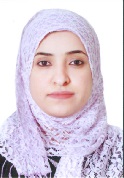
Biography:
Najlaa AL Rajaa is working as Former Program director for Saudi board training program at MCH AL HASAA and Consultant pediatric and fetal cardiologist aslo at MOH. clinical research fellow in fetal and neonatal cardiology at University of Alberta. Educated from University of Ottawa.
Abstract:
Fetal echocardiography is the ultrasonic evaluation of the fetal CVS. It is the 1ry modality for defining & evaluating fetal cardiac status, it requires detailed analysis of the anatomy from numerous views. Fetal echocardiography aims for prenatal diagnosis of critical and simple CHD, it allows for improved clinical status after birth. Indications of Fetal echocardiography:
Fetal, maternal and Familial. Antenatal diagnosis of CHD May lead to better surgical outcomes, prepares The Medical Team to deal with critically sick. Good intra-natal & postnatal care can be offered to the NN. Finally, Family will prepared emotionally & financially to accept such a baby.
Antenatal diagnosis of CHD. Demands a systematic approach to the investigation of the fetal heart, this approach is called Sequential segmental analysis of the fetal CVS: depends on the recognition of the morphology & connections of the 3 segments of the fetal heart. Steps for sequential segmental analysis of fetal CVS (Showing Normal Video Images).Assessment of fetal cardiac function will be discussed as part of hemodynamic assessment of the feral cardiovascular system.
Gabriela Juarez
La Salle University, Mexico
Title: Echocardiographic screening vs. symptomatic diagnosis for patent ductus arteriosus in preterms
Time : 15:35-16:00

Biography:
Gabriela Juarez is graduated from the Medicine School at La Salle University, and is Postgraduate in pediatrics at Children's Hospital of Mexico "Federico Gómez" and Neonatology in the Spanish Hospital of Mexico. Currently she is attending neonatologist in N.I.C.U. in the American British Cowdray Medical Center in Mexico City.
Abstract:
Background: The persistence of Ductus arteriosus, the aim of this study is to evaluate the possible benefit in the treatment for ductus closure when a early (less than 72 hours of life) echocardiographic screening is done versus when the echocardiographic diagnosis is realized only in present of associated symptoms. Methods: Preterm without malformation followed by two strategies: patent ductus arteriosus (PDA) screening or echocardiographic study on suspected PDA for symptoms (control group). We analyzed the ductus characteristics, the presence of pulmonary hypertension and the treatments for their closure. We analyze the result in relation of the premature age as: late preterm (34 to 36 gestational age weeks), moderate (30 to 33) and extreme (< 30). Results: There was no difference in the proportion of new borns diagnosed with PDA among the strategies (screening 18.6 % [101/543] vs 18.1 % [55/304], p = 0.92). In the control group, 53 % were diagnosed after 72 hours of life. There were no differences in realtion of the ductus characteristic among the groups. The closure treatment were similar in the two strategies among the moderate and late preterm, but was more aggressive in the control group in the extreme preterms.
Conclusion: The echocardiographic screening for PDA in extreme preterm new borns reduces the time to detect it, and allow to give less aggressive treatment. We do not recommend their use in moderate o late preterm new born.
Munesh Tomer
Medanta- The Medicity, India
Title: Unconventional use of Amplatzer devices: Percutaneous closure of non-septal cardiac defects/malformations
Time : 16:00-16:25

Biography:
Munesh Tomar is a well-known pediatrician in the country with about 10 to 15 years of work experience in the field of pediatric cardiology. Presently she is working as a Senior Consultant in the Department of Pediatric Cardiology and Congenital Heart Disease in Medanta, Gurgaon since March 2011. The major areas in which she is an expert includes- Echocardiography, transthoracic including 3D, transesophageal Ech., fetal echocardiography, evaluation and management of arrhythmias, diagnostic cardiac catheterization etc.
Abstract:
Introduction: Device closure for septal defects as fossa ovalis ASD, VSD and PDA is now a well-accepted indication. The Amplatzer devices are the most commonly used throughout the world. In this study, we are reporting the efficiency of closure of non septal defects with the Amplatzer group of devices although they have not been prototyped for use in such conditions.
Study design: Retrospective study, tertiary referral center.
Aim: To study the use of Amplatzer group of devices in non-septal defects/malformation.
Material & Methods: 29 patients in the age group 4 months-67 years, were treated percutaneously with Amplatzer devices for the following conditions: coronary arteriovenous (AV) fistula (Amplatzer duct occluder, n=6), pulmonary AV fistula (Amplatzer duct occluder, n=2), closure of ascending aorta perforation (Amplatzer septal occluder, n=2), ruptured sinus of Valsalva (Amplatzer duct occluder n=9), Fontan fenestration closure (Amplatzer PFO occluder and Amplatzer septal occluder one patient each), closure of large decompressing venous channel from Glenn (Amplatzer vascular plug, n=5) and closure of mitral paravalvular leak (Amplatzer septal occluder, n=1) and aortic paravalvular leak (Amplatzer duct occluder, n=2).
Results: Successful closure was achieved in all coronary AV fistula (immediately n=4, at 3 months in all), ruptured sinus of Valsalva (immediate in all), fenestrated Fontan (immediately in all), decompressing vein post Glenn (immediate) and ascending aorta perforation (immediate). The aortic paravalvular leak closed at 3 months follow-up. Continued residual flow persisted in mitral paravalvular leak at 6 months follow up.
Complication: Intravascular hemolysis and residual mitral regurgitation persisted in the patient with mitral paravalvular leak requiring surgical explanation and closure. On follow up ranging from 2 months-6 years, complete closure of the defects persisted with no adverse effect.
We conclude that, although devices have not been recommended for closure of non septal defects, it is possible in selected cases to treat these conditions non surgically with the use of non-prototype Amplatzer device without significant complications. Though strict long term follow up will be necessary before concluding that it can be safe alternative to surgery.
David Gozal
Hadassah University Hospital, Israel
Title: Sedation and anesthesia in the cardiac catheterization lab
Time : 16:25-16:50

Biography:
David Gozal is Director of the Sedation Service, Dept of Anesthesiology and Critical Care Medicine, Hadassah University Hospital, Jerusalem, Israel The Hebrew University of Jerusalem, Israel
Abstract:
In the last decade, procedures in the Cardiac Catheterization lab become more complex, take longer time, and involve higher sick patients. That led to many changes in strategy, and move from the Operating Room to the Cathlab. This originated new challenges to attending physicians and Anesthesiologists particularly. More and more they are managing a large range of children of different ages, different cardiac anomalies (some very complex), requiring an intervention in the cathlab instead or as a supplement to the surgery. No need to say that the Cathlab is a remote location, creating a hostile and unfamiliar environment, that makes the management of these patients more challenging.
Therefore, many of these procedures require General Anesthesia instead of Sedation. The Anesthesiology Department must be active in developing protocols and management guidelines.
The aims of this lecture will be to:
1- Describe the different indications for cardiac interventional procedures
2- Discuss the choice of the anesthesia technique (General Anesthesia versus Sedation)
3- Explain the notion of sedation and its complications
4- Decide the level of expertise of the physicians in charge of these cases
5- Consider safety as an important concern in this special setup
Amir A Sepehri
CAPIS, Belgium
Title: New advances in digital cardio-graph for screening and detecting heart diseases in children
Time : 16:50-17:15
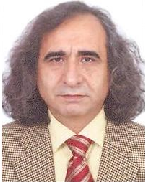
Biography:
Amir A Sepehri has received his PhD from ‘faculté polytechnique de mons’ (Mons University, Belgium), in Digital Audio Signal Processing. He has worked on a special research program on ‘Computerized Screening of Congenital Heart Disease’. The program was aimed toward obtaining a special diploma known as ‘l’Agrégation de l'Enseignement Supérieur’ in the same university. The result of his research work is formulated as Arash-Band and it is internationally patented. He has several publications on the CHD screening and detection. He is currently Director of CAPIS Biomedical R&D department.
Abstract:
Statistical analysis shows that around 1% of children are born with congenital heart diseases that count for about 10% of all congenital anomalies. While as many as 70% have asymptomatic extra sounds which are sometimes confused with pathological heart sounds during auscultation. It is sometimes vital that the conditions of these children be screened as early as possible and before 12 years of age. Studies show that the screening errors (positive or negative), are still substantial in primary health care centers, a large number of pediatric referrals for cardiac evaluation have normal hearts. Based on our unique and internationally patented processing method on murmur characterization, the Arash-Band method and its derivatives, an original digital phonocardiograph is developed. The new digital phonocardiograph has been tested on more than 1000 cases. The device has proven to have a >90% sensitivity, specificity and efficiency with correct diagnosis in children with heart diseases and 100% diagnostic accuracy with normal hearts with or without innocent murmurs The development of the new digital cardiograph also required automated end-pointing and segmentation of children´s heart sounds. For that purpose, we developed a novel method by paying special attention to physiological effects of respiration on pediatric heart sounds and using neural network classifiers. The new digital cardiograph exhibits superior performance than a pediatric cardiologist who relies on conventional or computer-assisted auscultation and drastically reduces unnecessary use of echocardiography. The new digital cardiograph is a children lives saver in developing countries and also it opens a new era for children heart states verification through telemedicine.

Biography:
Michelle Grenier is a professor of Pediatric Cardiology with experience in imaging, particularly in the area of myocardial changes related to cardiomyopathy and heart failure. Over the past 20 years, she developed a particular interest in identifying young athletes at risk for sudden cardiac death (SCD).
Abstract:
Introduction: Sudden Cardiac Death (SCD) is fairly frequent in the young athletic population, most common causes being hypertrophic cardiomyopathy (HCM), coronary artery anomalies and electrical abnormalities (including WPW, Long QT syndrome). The use of screening tools looking for these conditions remains controversial. EKG is an adjunct to SCD screening, but may lead to false positive results due to conditions such as physiological hypertrophy seen in athletic hearts. This athletic hypertrophy (eccentric or concentric) constitutes a "gray area" of abnormality. Hypothesis: Elite adolescent rowers will manifest cardiac changes including hypertrophy and EKG changes normally seen in elite adult rowers.
Methods: Cardiac screening was performed at an elite high school rowing event. 77 rowers participated, of age 15-18. 65% of them were male. The Protocol consisted of a 12-point AHA questionnaire, physical examination, 12-lead EKG, and an echo done on site. The preliminary results of the studies were given to the participants prior to completion of the study. Abnormal final results were communicated. Results: All participants had normal physical examinations. None had overt abnormalities by echo. Subtle abnormalities were seen including: 2 dilated aortic roots (1 with a dilated main Pulmonary artery/ Tricuspid and Mitral regurgitation). Also 1 MR and TR. Coronary origins and proximal vessels were visualized in 53 of 77 participants. None of the subjects exhibited hypertrophy, although 20 (25%) had coarse posterior wall or apical trabeculations. LVEDd was increased in 9 of the rowers (12%). Ejection Fraction (EF) was calculated in 73/77, with 55/77 having EFs greater than 55%. The remaining EFs were less than 55% with one at 48%. Of note, septal and lateral DTI velocities fell within normal range. By EKG, 75/77 were in sinus rhythm (2 were functional). 4 had LVH criteria (2 had increased LVEDd by echo), 3 with long LQT (1 with dilated MPA and aortic root), 2 first degree AV block, 1 WPW (symptomatic). EKG abnormalities were communicated.
Conclusions: In this population of young, elite rowers, there were 4 patients identified as having risk for SCD, at a rate of 3.1%. Few false positive EKGs for hypertrophy were seen. Elite young rowers do not exhibit the eccentric hypertrophy described in adult rowers, which may be a manifestation of the duration of high level participation in the sport or the age of the rower.
Silvana Molossi
Baylor College of Medicine, USA
Title: Sudden Cardiac Death in Young Athletes: Feasibility of Large Community Screening

Biography:
Silvana Molossi Lawrence joined the Faculty at Baylor College of Medicine and Texas Children’s Hospital as an Associate Professor, Section of Pediatric Cardiology, in March 2011. Dr. Lawrence has been working for the past six years in screening young athletes for conditions known to be high risk for sudden cardiac death (hypertrophic cardiomyopathy, in particular). Dr. Lawrence is the Vice President of Science and Research for the Championship Hearts Foundation, Austin, Texas.
Abstract:
Cardiovascular screening of adolescent athletes is a controversial topic. Questions of sensitivity, specificity, practicality, and costs as well as appropriate protocols remain unanswered. Moreover, little is known about the natural history of factors that predispose young athletes to sudden cardiac death (SCD). History and physical exam remain the recommended approach in the US, whereas the addition of an ECG is widely used in Italy and other countries, at times also echocardiography and stress exercise test. Feasibility of large screening in the young population is debatable, especially related to its predictive value and the rare event of SCD. Beginning in 2010, the Texas Adolescent Athlete Heart Screening Registry (TAAHSR) project has conducted community-based cardiovascular screenings for adolescent athletes aged 14-18 years and of multiple ethnicities.
Medical and family cardiovascular history, a 12 lead ECG and a limited 2-D echocardiogram (ECHO) are obtained. All athletes with positive findings due to concern for a possible cardiovascular condition at screening are referred for complete cardiology evaluation and follow up results tracked subsequently. About 8% of athletes are referred due to either ECG or ECHO abnormalities. The prevalence of SCD-related conditions is 0.22% of the population screened. History data does not correlate with likelihood of referral nor positive cardiac diagnosis. Quality of data and trained personnel are of paramount importance to decrease false positives and increase yield of detection of true cardiovascular conditions in the young athlete population. Large-scale community screening in high school athletes using both ECG and ECHO identifies previously unknown SCD-related conditions.
Vasileios Bouras
Cipher Health, USA
Title: Predicting readmission of heart failure patients using automated follow-up calls

Biography:
Vasileios Bouras joined CipherHealth in April 2012 as Head of Patient Data Analytics to help improve patient outcomes through patient data analytics. Vasileios provides leadership and analysis for numerous reporting and statistical research project; most recently developing a model to predict a patient’s readmission probability. Vasileios holds a BS in Management Science and Technology from Athens University of Economics and Business where he graduated top of his class and a MS in Operations Research from Columbia University
Abstract:
Cipher Health brings care providers and patients together, but that's not all. Over the years, we've brought together technologists, clinicians, engineers, consultants, students, coders, researchers, communicators, politicos, and a host of others. We're as passionate about our team as they are about healthcare, and it shows.
Readmission rates for patients with heart failure (HF) remain high. Many efforts to identify patients at high risk for readmission focus on patient demographics or on measures taken in the hospital. We evaluated a method for risk assessment that depends on patient self-report following discharge from the hospital. In this study, we investigated whether automated calls could be used to identify patients who are at a higher risk of readmission within 30 days. Our conclusion was that patients at an elevated risk of readmission can be identified based on the trend of their responses to automated follow-up calls. This presents a simple method for risk stratification based on patient self-assessment.
Patricia Bastero
Baylor College of Medicine USA
Title: Good, pretty and cheap: creating endless learning opportunities with a new in situ simulation based cardiology-training program.

Biography:
Currently I am also involved with The Congenital Heart Surgery project in Mexico, in collaboration with TCH international services. I participate in many internationals ECMO courses bringing a good "hands on" experience with high fidelity simulation for ECMO.My main research interest is based on education research at the moment. My past research experience involves my PhD thesis, a prospective investigation of the relationship between the Vitamin D receptor gene and Estrogen receptor gene polymorphisms, and their relation to the growth pattern in healthy children from birth to 7 years of age.
Abstract:
Background: Acute care inpatient units, such as cardiology floors, are high acuity and highly specialized areas with an increased potential for codes and other emergency events. Simulation based educational programs are a very effective and efficient way to train health care providers on emergency situations, and improving their confidence and comfort when treating high risk patients. We present the results of the first in-situ simulation room in our cardiology floor, the learning opportunities created, the cost and the impact of this new regular activity in our staff.
Methods: We installed our simulation equipment, including a camera and a mock crash cart, in one of the free procedure rooms in our cardiology floor. Five simulation instructors with experience on cardiology emergencies and/or CRM skills participate in the program. We run twice weekly, mostly, “just in time” simulation scenarios. We use the small conference/family room on the cardiology floor for our debriefings. The scenarios are run for 10 minutes, debriefings for 20 minutes. Evaluations are filled post-simulation activities every time, by every participant.
Results: We created over 994 multidisciplinary educational opportunities, training 97% of the residents, 100% of the cardiology fellows, 67% of the NPs and 90% of the RNs, on our cardiology floor. Over 85% of the scenarios were run by the same three instructors and 80% of the scenarios were conducted during daytime hours. The total cost was $37,205. The evaluations were overall >4/5 when assessing for self-reported ability to perform as part of a team during high-stakes events, increasing the vigilance to patient safety during crisis and self-confidence in handling critical situations. Discussion: It is feasible to create an interesting and engaging “in situ” educational program with minimal equipment and cost, and limited manpower that improves team and personal performance. We need further research to evaluate whether this educational method helps improving patient safety, by, for example, increasing rapid response team (RRT) calls while decreasing real codes, and improving code outcomes.
Randy Richardson
St. Joseph's Hospital and Medical Center, USA
Title: Color Coded 3-D Models of Cardiac Anatomy Improves Identification of Structures in Congenital Heart Disease.

Biography:
Randy Richardson, MD Associate Dean for Medical Education at St. Joseph's Hospital and Medical Center. His specialization is Pediatric Radiology or Radiologist.
Abstract:
Objective
Cardiac CT angiography (CCTA) with three dimensional reconstructions is quickly becoming the new standard for identification and characterization of congenital heart diseases. The purpose of this study is to demonstrate effectiveness of standardized color-coding of the anatomical structures in 3-D reconstructions of congenital heart diseases using CCTA.
Materials and Methods
An easy-to-follow color coding scheme was implemented for the various anatomical structures. The aorta and its branches (including coronaries) were colored bright red. The pulmonary arteries and veins were colored dark blue and dark pink respectively. The ventricles were colored in a lighter shade of their respective outflow tracts to delineate the two chambers. Hence, the left ventricle was colored a lighter shade of red and the right ventricle was colored a lighter shade of blue. The left and right atria were colored an even lighter shade of red and blue respectively. The tracheo-bronchial tree was depicted in yellow.
CCTA data of 5, randomly selected, patients with congenital heart disease was selected. 3D reconstructions of the anatomy were performed with no color, random color, and standardized color schemes (as described above), using commercially available workstations. Total of 12 basic thoracic structures were labeled on each color scheme.
Three groups of 40 second year medical students each were randomly selected and shown one of the above three color schemes respectively. They were asked to identify the labeled structures, and their responses were statistically analyzed using ANOVA test.
Rubin Seymour Cooper
Hofstra North Shore-LIJ, USA
Title: Endothelial function evaluation in patients with anorexia nervosa

Biography:
Rubin Seymour Cooper, MD Specialty is Pediatric Cardiology, Pediatrics. He is a Chief - CCMC Division of Pediatric Cardiology and Professor, Hofstra North Shore-LIJ School of Medicine,USA
Abstract:
Introduction: This study evaluated endothelial function in patients with anorexia nervosa (AN) using Endothelial Pulse Amplitude Testing (Endo-PAT) and correlated findings with the patients’ history and biochemical data.
Method: Twenty-one patients age 13-21 years diagnosed with AN by the Division of Adolescent Medicine at Cohen Children’s Medical Center of NY between 6/1/2012 and 5/31/2013 were studied along with 19 healthy controls similar in age and gender distribution. Digital pulse amplitude was examined using Endo-PAT. Raw data were automatically transferred into a reactive hyperemia index (RHI) and the natural log transformation of RHI (LnRHI). Subjects’ and controls’ electrocardiograms and biochemical markers were obtained.
Results: AN and controls had similar RHI (P=0.75) and LnRHI (P=0.95). A had lower mean weight (P<0.001), height (P=0.02), BMI (P<0.001), resting HR (P<0.001), systolic (P<0.001) and diastolic BP (P=0.01). AN also had lower mean HR during EndoPAT testing (P<0.001), triiodothyronine (T3) (P<0.001), luteinizing hormone (LH) (P=0.006) and estradiol (E2) (P=0.005). Total cholesterol (Chol) (P<0.001) was higher in AN subjects. No correlation was observed between RHI and other parameters.
Conclusion: No significant differences in RHI or LnRHI found between the two groups. There were significantly higher Chol and lower HR, T3, LH and E2 levels in the group compared to controls. There were no correlations of these parameters to RHI.
Jane Somerville
Imperial college London, UK
Title: The prenatal diagnosis of congenital heart defects

Biography:
Jane Somerville established the first adolescent cardiology ward in 1975 at National Heart Hospital in London. In 1980, she organized the first World Congress of Pediatric Cardiology, also in London. Dr. Somerville established “Grown Up Congenital aHeart Disease†(GUCH) as a subspecialty of cardiology in the UK and Europe and founded the European Society of Cardiology Working Group on GUCH. The GUCH unit at Brompton Hospital is named after Dr. Somerville. Her “Unicorns,†a club of doctors from all over the world who have trained with her, continue to spread the passion for GUCH. Dr. Somerville has written papers on pediatric cardiology and adult congenital heart disease and given numerous named lectures, including the upcoming Dan G. McNamara lecture at ACC 2012 in Chicago. She has also been chosen to be honored by ACC as one of five legends for her contributions to cardiology, which she hopes has the potential to increase the “profile†of congenital heart patients and the importance of the issues that adults with CHD face.
Abstract:
95%of infants born with abnormalities of the cardiovascular system should reach adulthood, mainly due to surgical skills perfected over 60years together with the development of pediatric cardiology, anesthesia, intervention, intensive care and refined imaging techniques. Best Medical care and support must be continued beyond pediatrics.
The needs of these grown up congenital heart patients[GUCHS] are many medical for arrhythmia, heart failure , Endocarditis ,symptomatic deterioration ,increasing cyanosis, further cardiac surgery and/or intervention, surgery outside the heart and special care and advice in relation to pregnancy and disease in other systems. In addition, informed advice for life style issues and needs is required as part of specialized unit.
The most “at risk†conditions are the named operations, any condition with atresia, transposition, malposition absence, single or common in title, childhood valve replacements, and Coarctation.
Establishing best National medical care is difficult, obstructed by doctors, finance, management and “vested “interests. Overcoming them is possible and easiest in small countries with state funded health services.
Luc Bruyndonckx
University of Antwerp, Belgium
Title: Diet, Exercise, and Endothelial Function in Obese Adolescents

Biography:
Luc Bruyndonckx has completed his PhD from the University of Antwerp. He is currently working as post-doctoral researcher at the department of cardiovascular diseases of the University of Antwerp.
Abstract:
Endothelial dysfunction (ED), an early indicator of atherosclerosis, is present in obese adolescents. The first signs occur in small resistance vessels (micro vascular endothelial dysfunction), whereas later on, the larger conduit arteries are affected (macro vascular endothelial dysfunction). Macro vascular endothelial dysfunction in obese adolescents can be reversed by 6 weeks of exercise training. Whether micro vascular endothelial dysfunction is also reversible isn’t known.
The aim was to investigate the influence of a multicomponent treatment program on micro vascular function in obese adolescents. Additional endpoints were a reduced BMI SD-score, improved exercise capacity and an increase in Endothelial Progenitor Cells (EPC) and a decrease in Endothelial Micro Particles (EMP).
Two cohorts of obese adolescents were recruited: an intervention group (n= 33; 15.4 ± 1.5 years, BMI: 36.44 ± 4.82 kg/m²), receiving supervised diet and exercise training and an ambulant treated usual care group (n= 28; 15.1 ± 1.2 years, BMI: 36.72 ± 5.83 kg/m²). Changes in body mass, cardiorespiratory fitness, micro vascular endothelial function, circulating EPC and EMP were evaluated after 5 months and at the end of the 10 month program.
Residential treatment improved BMI and increased exercise capacity (p<0.001 after 5 and 10 months). Micro vascular endothelial function also improved in the intervention group (p= 0.04 at 10 months). Furthermore, intervention led to a significant increase in EPC numbers after 5 months (p=0.01); EMP counts decreased after 10 months (p=0.004).
Conclusion: A treatment regimen consisting of supervised diet and exercise training was effective in improving multiple adolescent obesity-related endpoints.
Sandra Matiz Mejia
Universidad El Bosque, Colombia
Title: Cardiovascular compromise of Fabry Disease.

Biography:
Sandra Matiz MejÃa, by Superior Education Viceministry recommendation, made a visit for quality verification of minimal conditions from the medical - surgical specialization program in: PEDIATRIC CARDIOLOGY from “Universidad Pontificia Bolivariana†(ClÃnica Cardiovascular Santa MarÃa) in June 13,14 and 15, 2005.
Abstract:
Fabry disease is a progressive X-linked disorder of glycosphingolipid metabolism caused by a deficiency of the Alfa -galactosidase lysosomal enzyme. The partial or complete deficiency of the lysosomal enzyme leads to an accumulation of neutral glycosphingolipids in the vascular endothelium and visceral tissues throughout the body. We can confirm the disease by demonstration of a low plasma Alfa-galactosidase A (Alfa-Gal A) activity.
In the heart, glycosphingolipids deposition causes progressive concentric left ventricular hypertrophy (LVH) without dilation, severe loss of left ventricular systolic function and compromised diastolic function, mitral and aortic valvulopathy and disorders of the Atrioventricular conduction, repolarization or arrhythmias.
On electrocardiogram we can find: Prolongation of the QTc interval (> 440 ms), widening of corrected QRS, bundle branch block, Atrioventricular block, premature atrial contraction, premature ventricular contraction and Wolff-Parkinson-White syndrome.
The availability of enzyme replacement therapy (ERT) for this debilitating condition has led to the need for a deep knowledge from the Pediatric and Cardiology Pediatric groups in order to diagnose and treat it efficiently an rapidly. This will improve the quality of life and attenuate the cardiovascular compromise in pediatric patients with Fabry Disease.
Eugen Sandica
Heart and Diabetes Centre NRW, Germany
Title: Unifocalization in patients with single – and two-ventricle physiology

Biography:
Eugen Sandica is Director and Surgeon-in-Chief, Department of Surgery for Congenital Heart Defects Medical Director, Center for Congenital Heart Defects, Heart and Diabetes Center NRW, Germany.
Abstract:
Obiective. This retrospective study reviews our results with unifocalization of major aortopulmonary collateral arteries (MAPCAS) in patients with single- and two-ventricle physiology.
Method. 13 patients (median weight 7.8 kg, median age 12 months) with pulmonary atresia and MAPCAS have been operated on between October 2008 and August 2014. Two patients had already had a shunt procedure, in one of them together with correction of a total anomalous pulmonary venous connection. Three patients had a functional single ventricle. In all patients a midline one-stage complete unifocalization of the MAPCA has been performed together with a shunt as a pulmonary blood flow source in three patients, a Glenn procedure in two patients and an intra-cardiac repair (closure of the ventricular septal defect) with right (RV) ventricle to pulmonary artery valves conduit in eight patients.
Results. All patients survived the unifocalization procedure and are alive at a mean follow-up of 40.6 months (range 1 – 70 months). Two patients with single-ventricle physiology already received the Fontan palliation with a non-fenestrated extra cardiac conduit. Three patients with two-ventricle physiology needed catheter interventions for peripheral pulmonary artery stenosis and eventually stent implantation in two cases. Two patients with unifocalization and intracardiac repair had an RV pressure estimate on their latest echo using the tricuspid regurgitation envelope of one half systemic pressure while another two patients had an RV pressure estimate of more than two thirds systemic pressure.
Conclusions. In our experience very good results can be obtained after unifocalization in patients with single- and two-ventricle physiology.
Razvan O. Mada
Catholic University Leuven, Belgium
Title: Role of Echocardiographic Deformation Imaging in the Evaluation of the Left Ventricular Function

Biography:
Razvan O. Mada is doctor at Department of Cardiology, University Hospital Gasthuisberg, Catholic University Leuven, Leuven, Belgium
Abstract:
Echocardiography is a widespread and cost-effective method which allows a non-invasive assessment of the cardiac function and morphology. For many years, the evaluation of the left ventricular (LV) function was limited to the ejection fraction or to the visual estimation of the wall motion and thickening. Despite their clinical usefulness, these parameters are highly subjective, relying on the experience of the investigator. Echocardiographic deformation imaging has emerged as an objective alternative to quantify global and regional myocardial function in adult as well as in pediatric population. Both Tissue Doppler Imaging (TDI) and Speckle Tracking Imaging allow quantifying myocardial function beyond what can be done by visual analysis, proving their potential under different patho-physiological conditions.
The ability to improve the interpretation of the systolic and diastolic function promoted functional deformation imaging from the research field to the routine clinical practice. TDI is essentials for the evaluation of the diastolic LV function, becoming part of the clinical standard echocardiogram. Rotational deformation parameters like twist and torsion have the potential to overcome the limitations of the previous method. However, current technical limitations make them inappropriate for the clinical usage. For the characterization of the global systolic LV function, global longitudinal strain is a feasible and robust parameter. Regional deformation parameters are able to detect subtle changes of the myocardial function. Moreover, they have particular patterns in different clinical conditions providing additional diagnostic information. Standardization of the echocardiographic deformation imaging will eliminate the intervendor variability of the software algorithms, allowing common reference values.
Vanessa Canuto
Instituto Dante Pazzanese de Cardiologia, Brazil
Title: Three-dimensional echocardiography for right ventricular evaluation in patients in late postoperative of Tetralogy of Fallot

Biography:
Vanessa Canuto is a Pediatric Cardiologist currently working in the echocardiographic laboratory at Instituto Dante Pazzanese de Cardiologia, Sao Paulo, Brazil. She is doing doctoral course by the University of Sao Paulo. Her research interests focus on new echocardiographic technologies like strain and three-dimensional echocardiography in the evaluation of congenital heart disease.
Abstract:
Introduction: Right ventricle evaluation is one of the major concerns in late postoperative of Tetralogy of Fallot (T4F). Pulmonary insufficiency results in ventricular dilation and consequently dysfunction. Time for re-intervention has been defined mainly by right ventricular end diastolic (RVEDV) and systolic (RVESV) volumes indexed by body surface in magnetic resonance imaging (MRI). Three-dimensional echocardiography (3DECHO) is a recent technology that calculates right ventricular volumes proposing to be an alternative diagnostic method for this population.
Objective: This study sought to assess a possible correlation between RVEDV and RVESV acquired by 3DECHO and MRI from patients in late postoperative of T4F.
Methods: Thirty patients were recruited for the study. Those with associated pathologies and moderate/severe residual lesions, except pulmonary insufficiency (PI), were excluded. 3DECHO was performed in our institution and MRI in referenced hospitals.
Results: Mean postoperative period was 24±10 years, mean age 26±12 years. Twenty-one (70%) patients had severe PI. Time average between 3DECHO and MRI studies was 1±1.5 years. There was good correlation of RVEDV (r=0.70, p<0.001) and RVESV (r=0.68, p<0.001) between methods, although there was slight discrepancy in larger volumes. After reaching high values, 3DECHO detected proportionally smaller volumes, underestimating the dilation when compared to MRI (gold standard). Nonetheless, RVEDV ≥99 ml/m² detected by 3DECHO had 69% of sensitivity and 93% of specificity in estimating RVEDV ≥140ml/m² detected by MRI.
Conclusion: There was a significant correlation between 3DECHO and MRI right ventricular volumes. 3DECHO can be an alternative method to monitor right ventricle until the dilation reaches critical volumes. Nevertheless, to determine the ideal time of a surgical rapprochement, the MRI remains essential.


